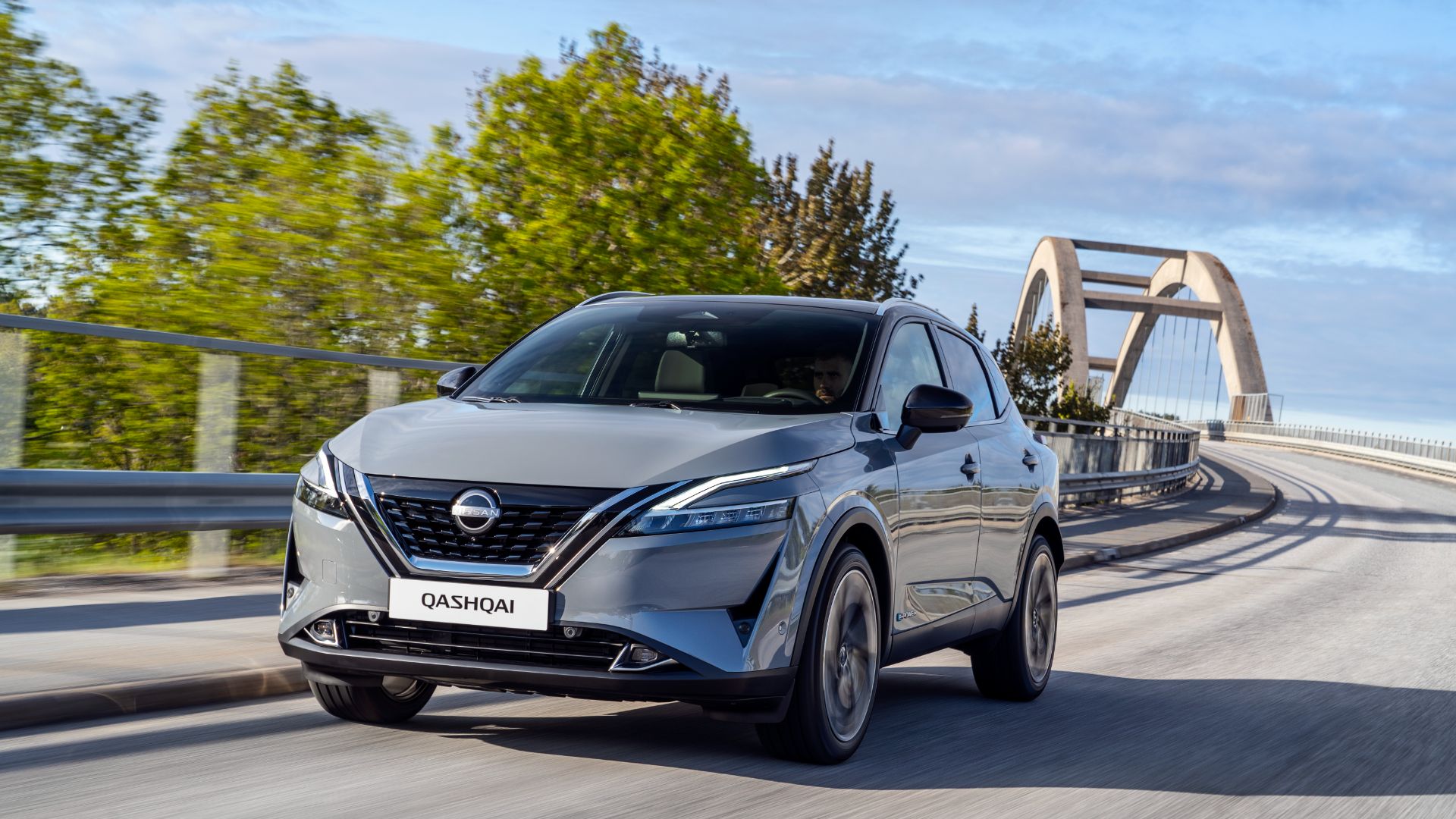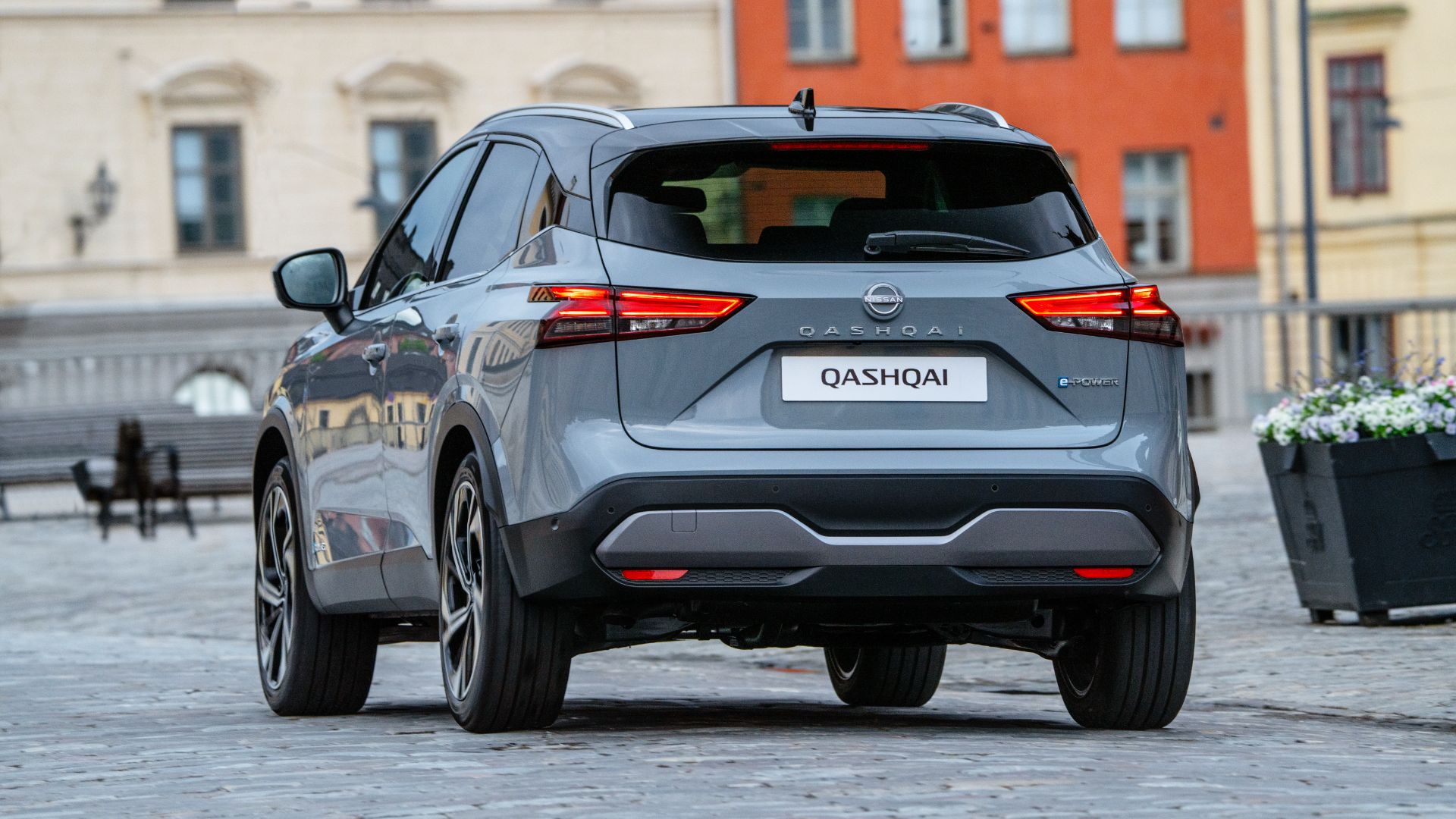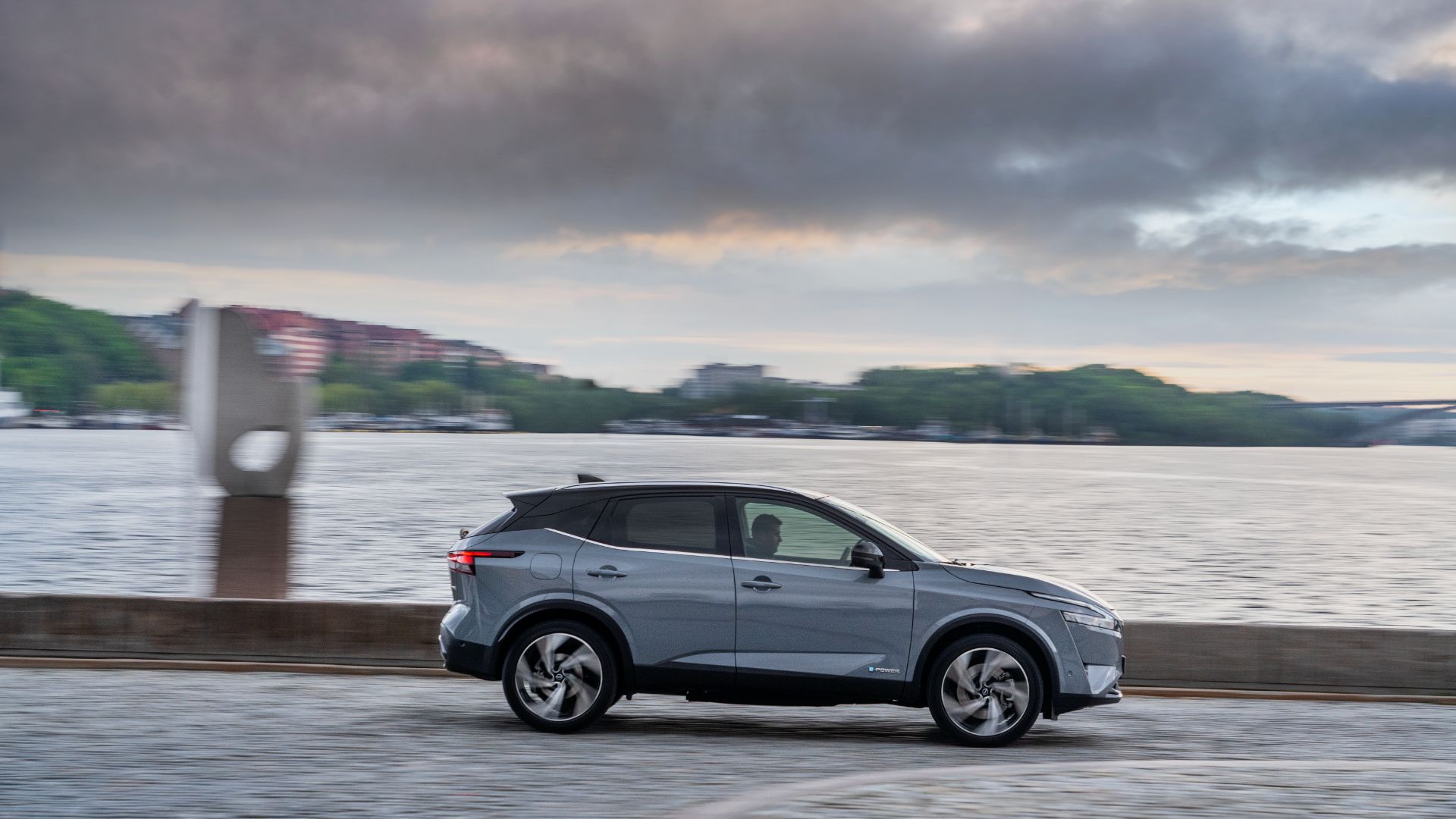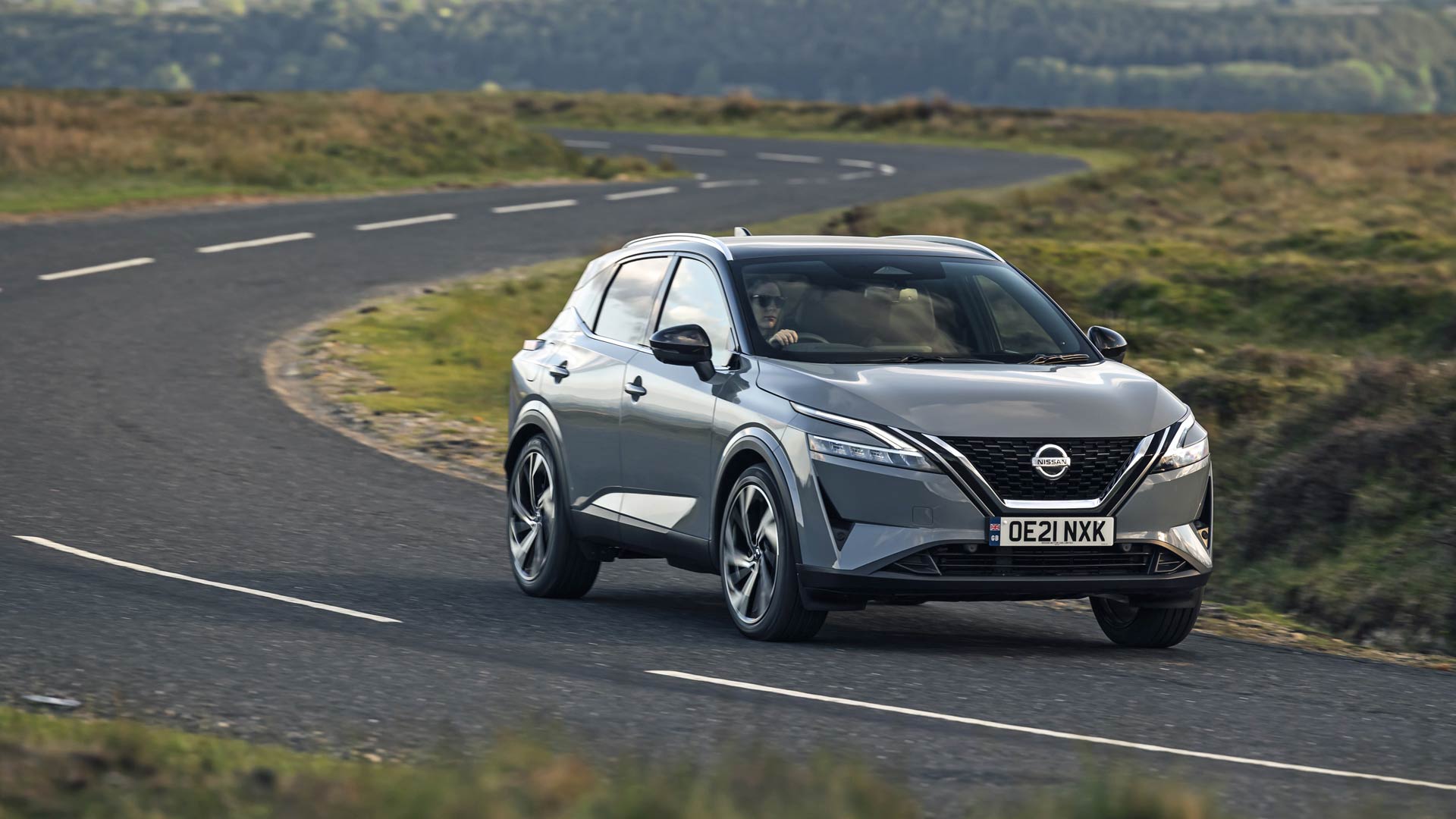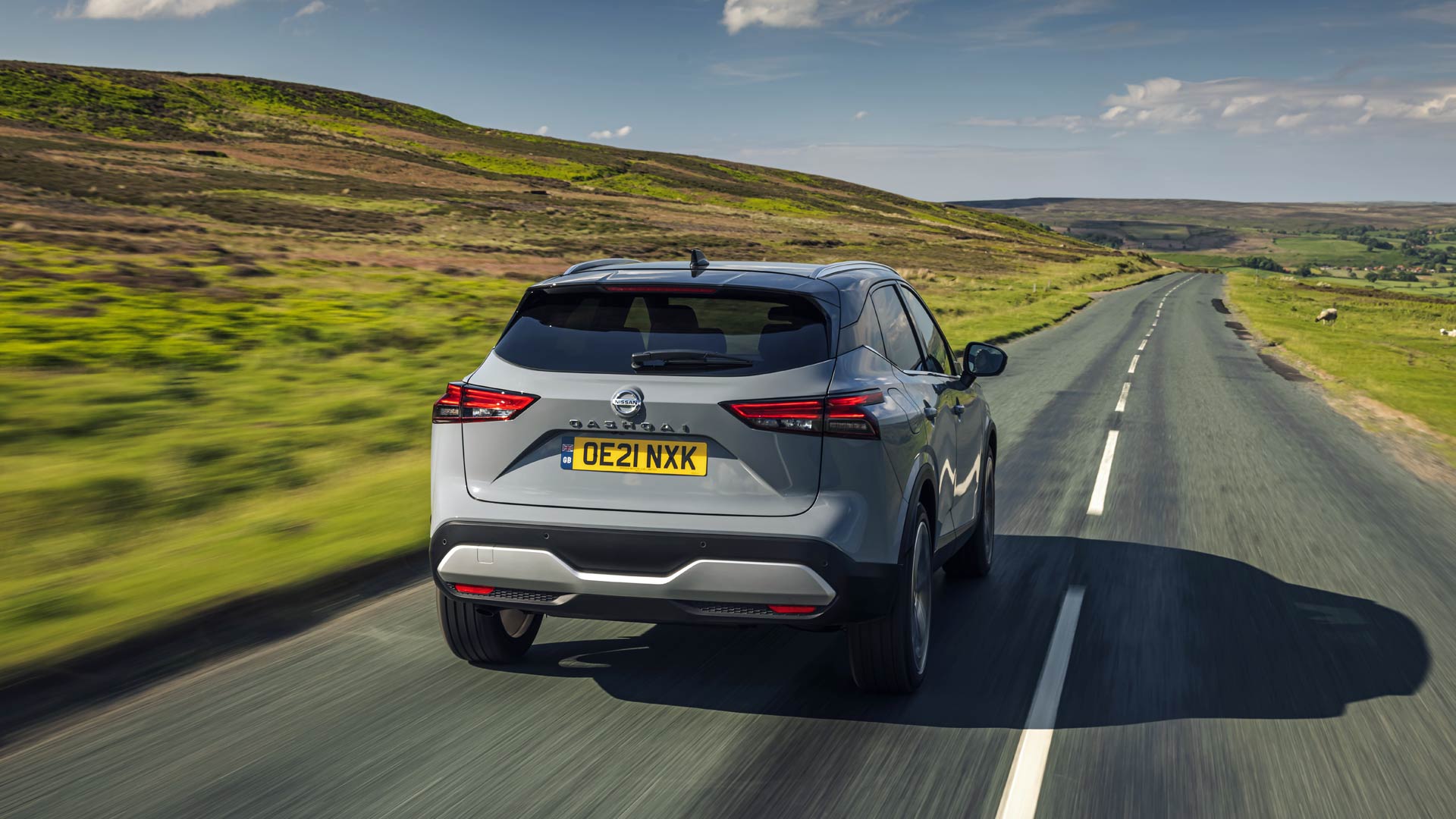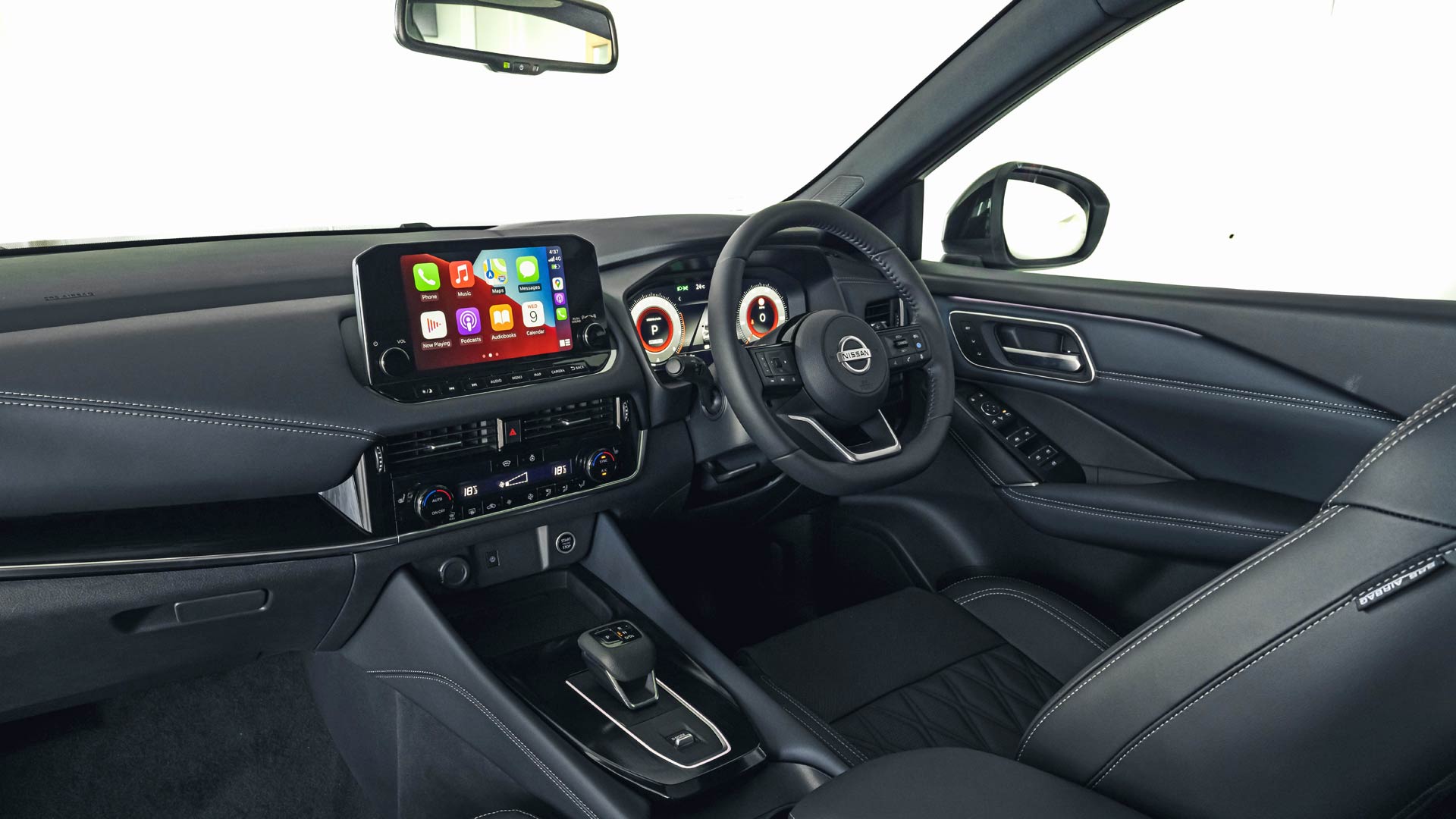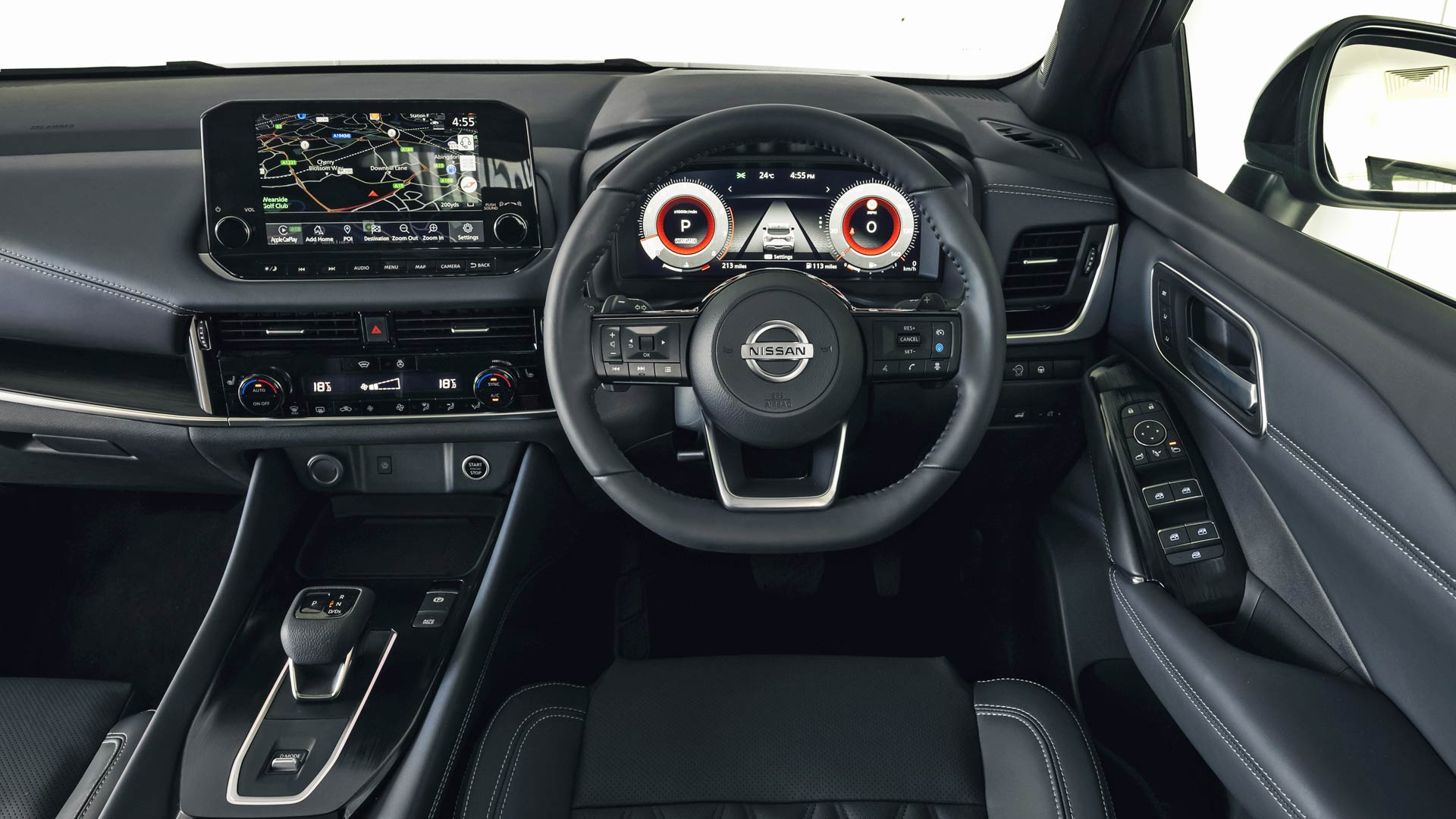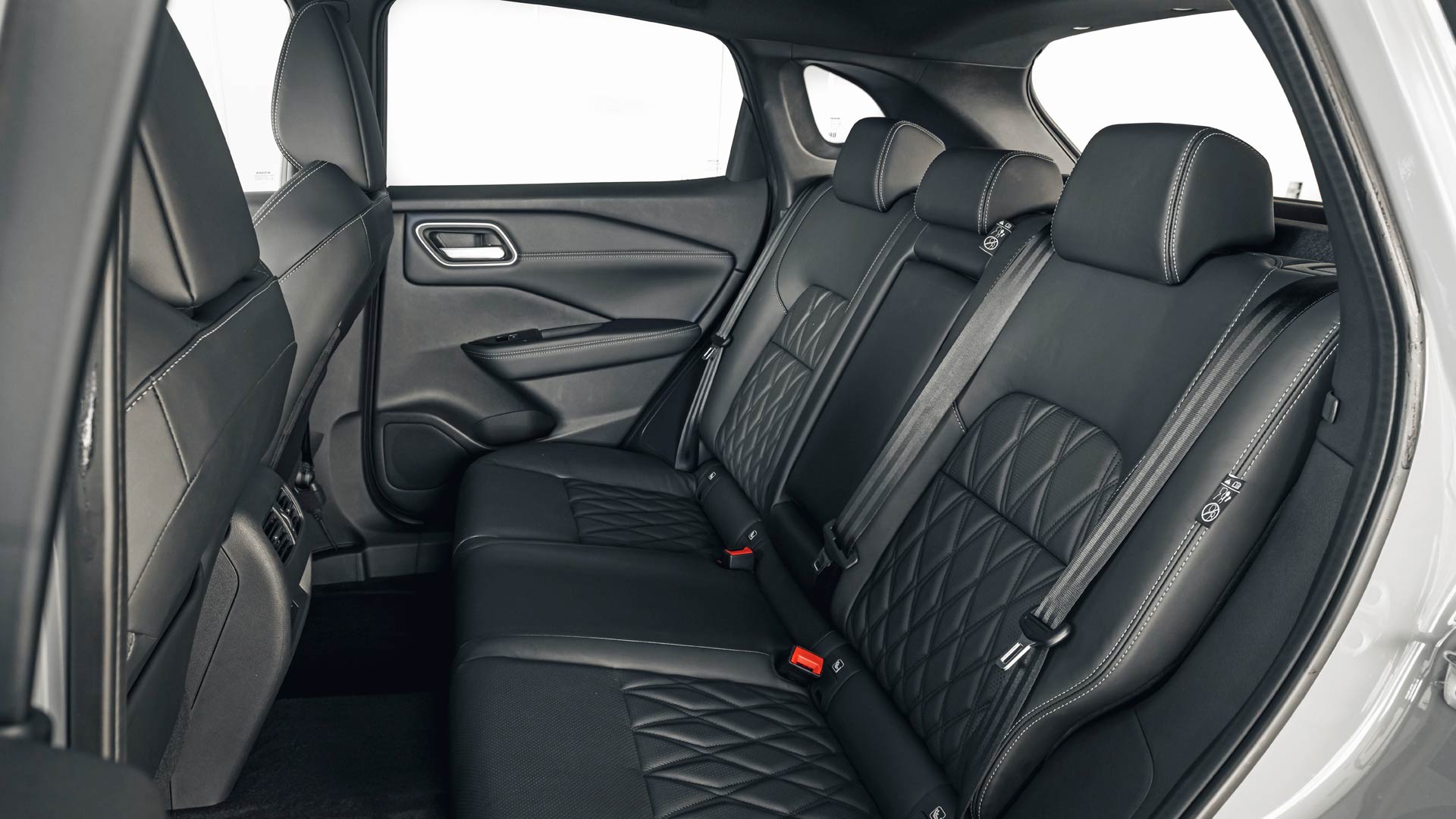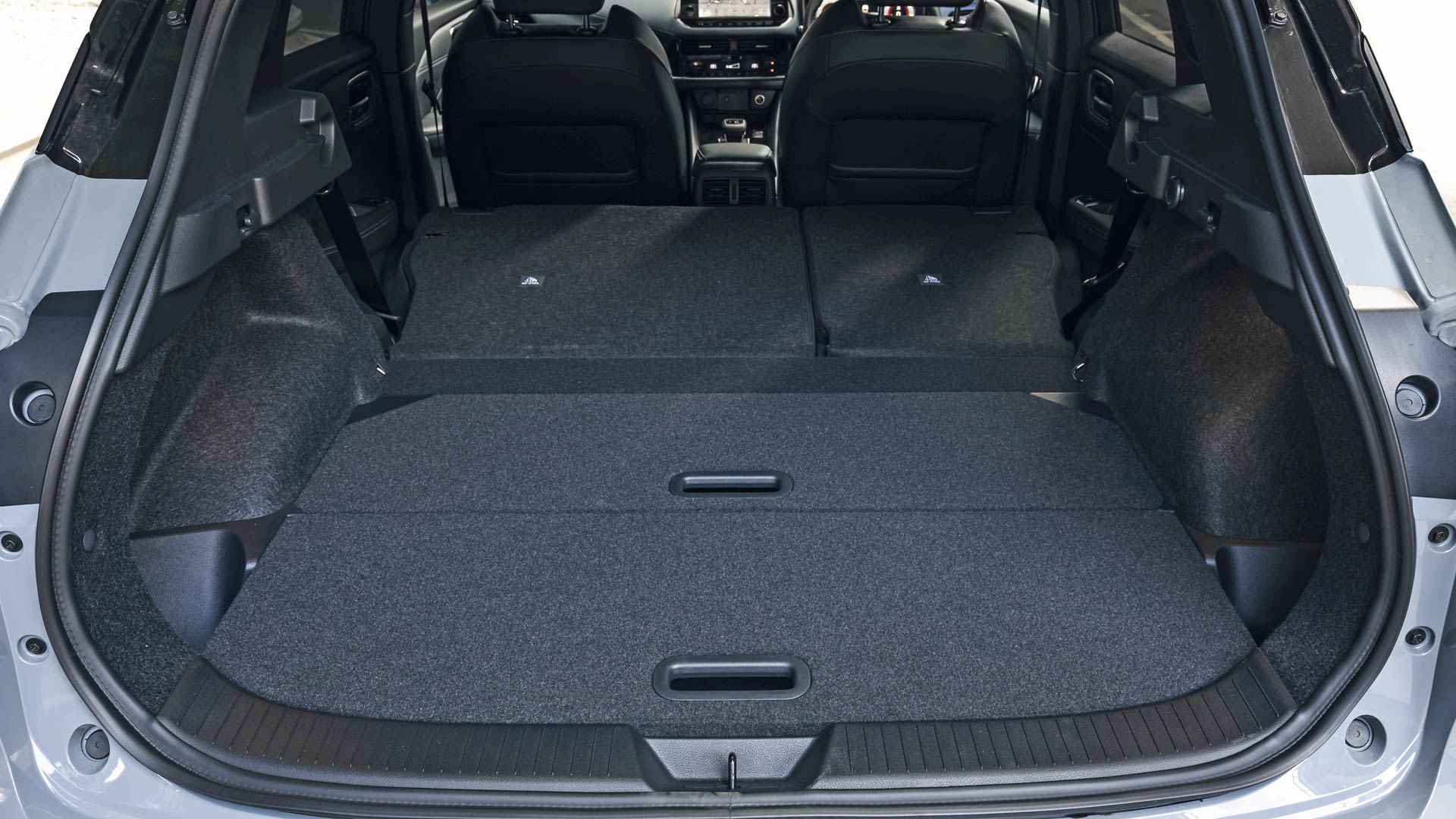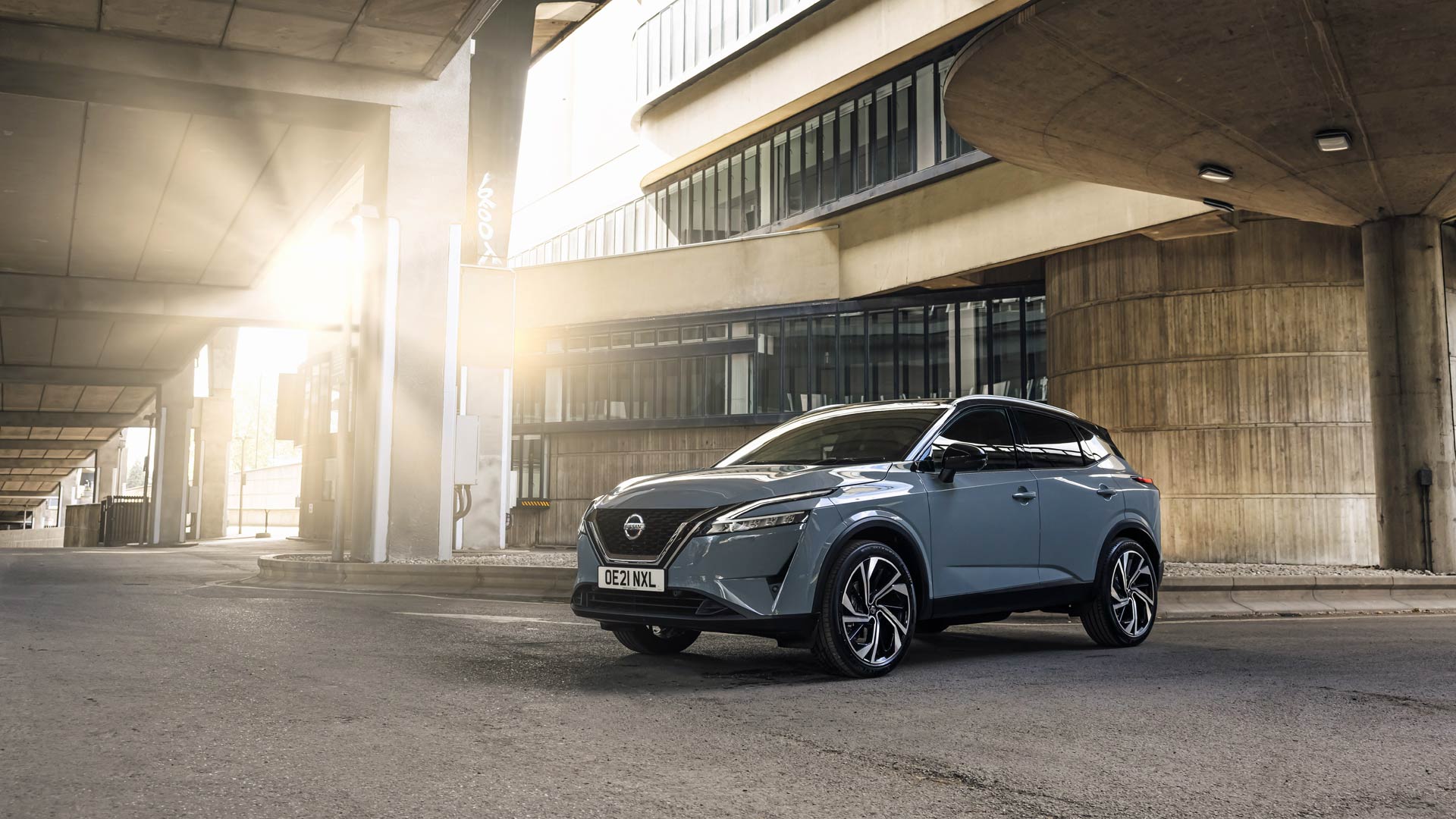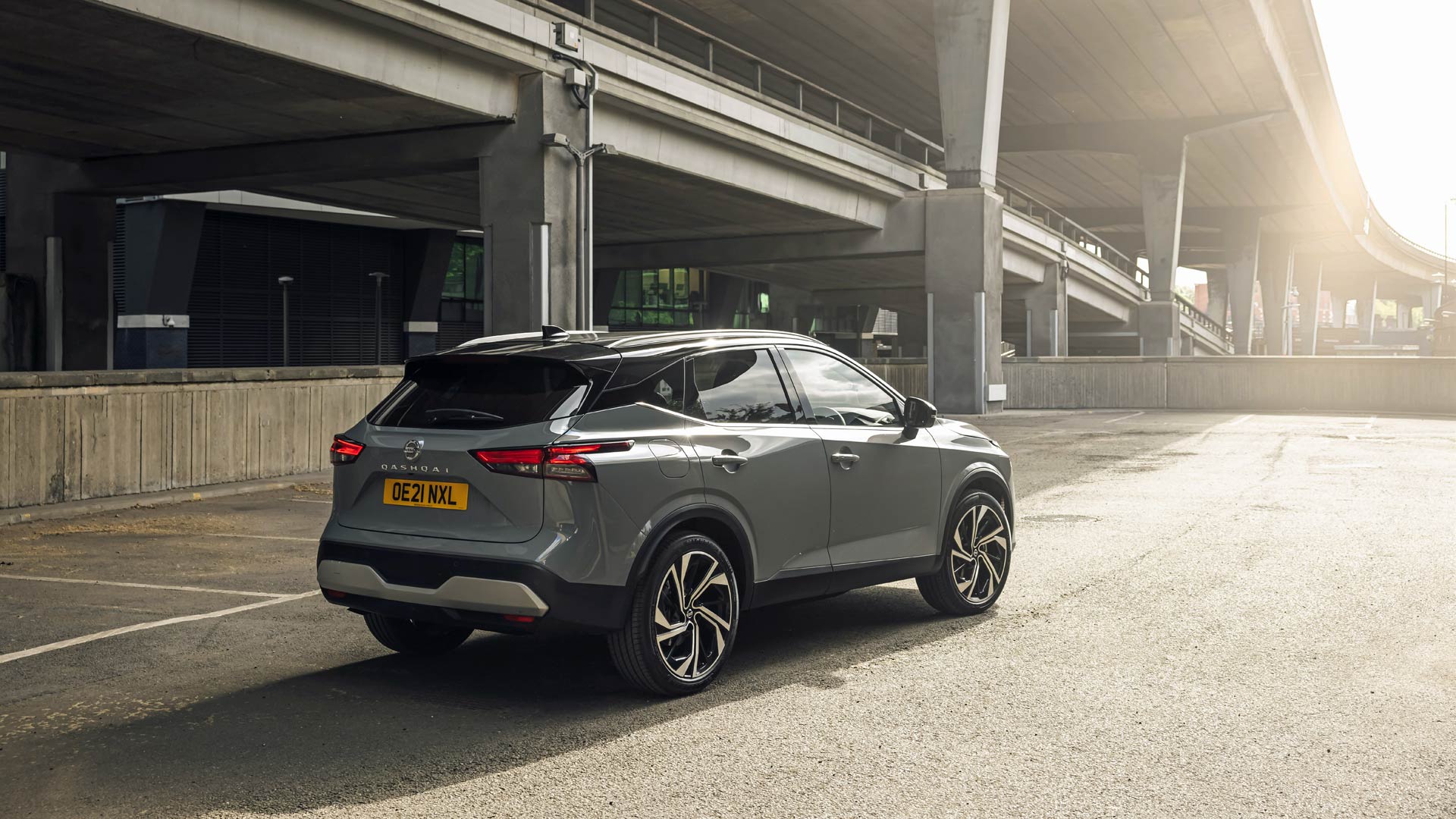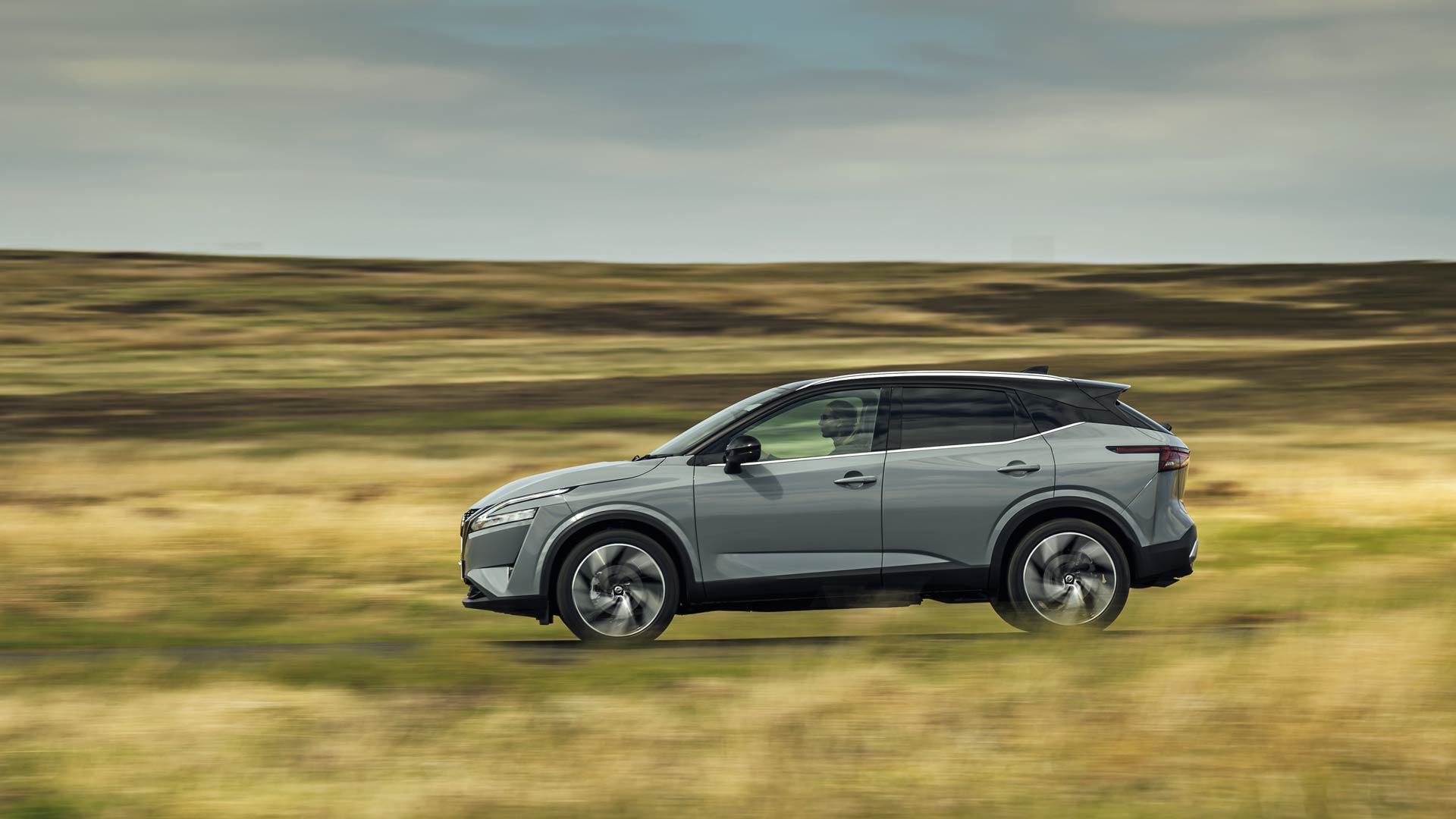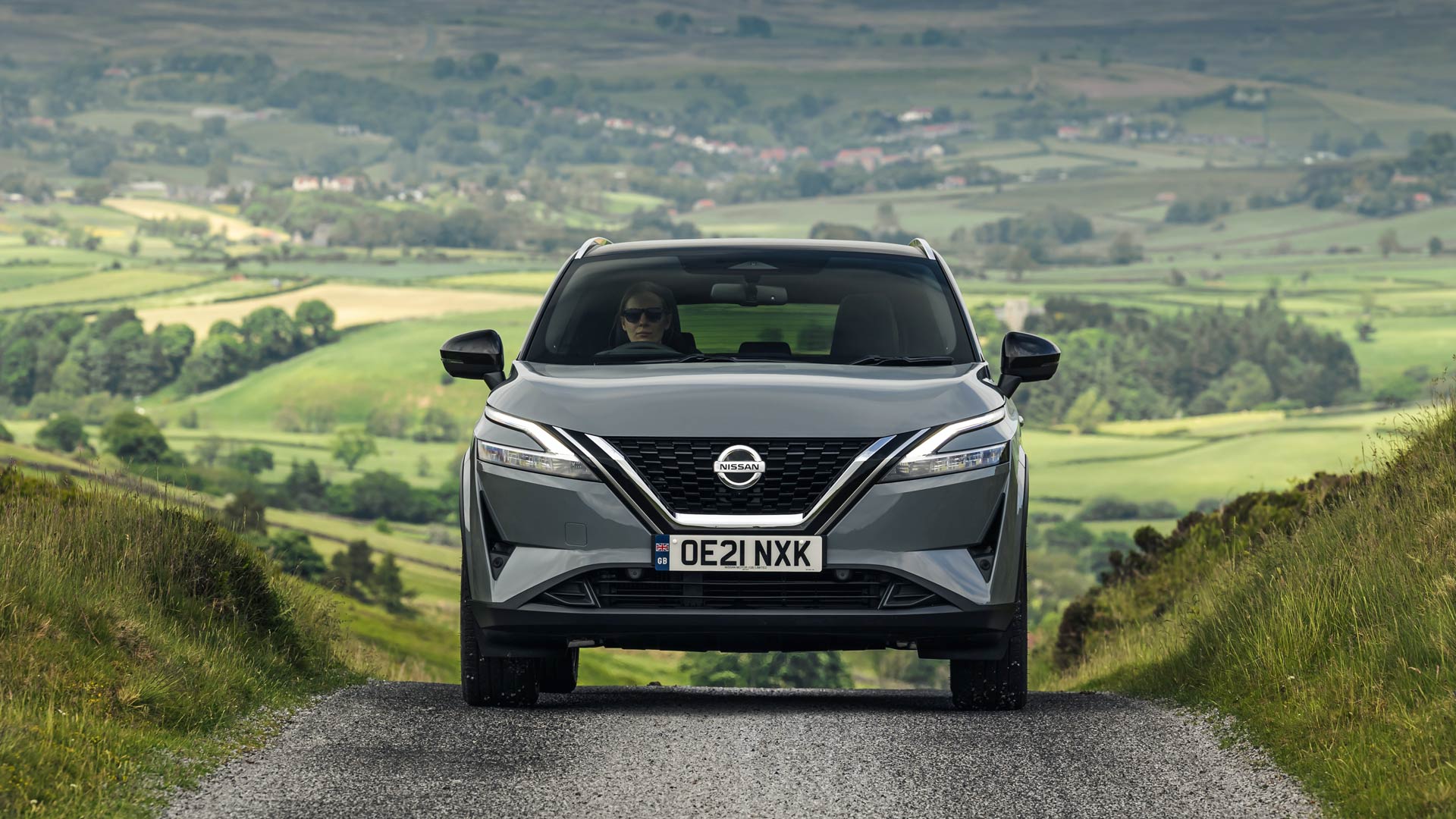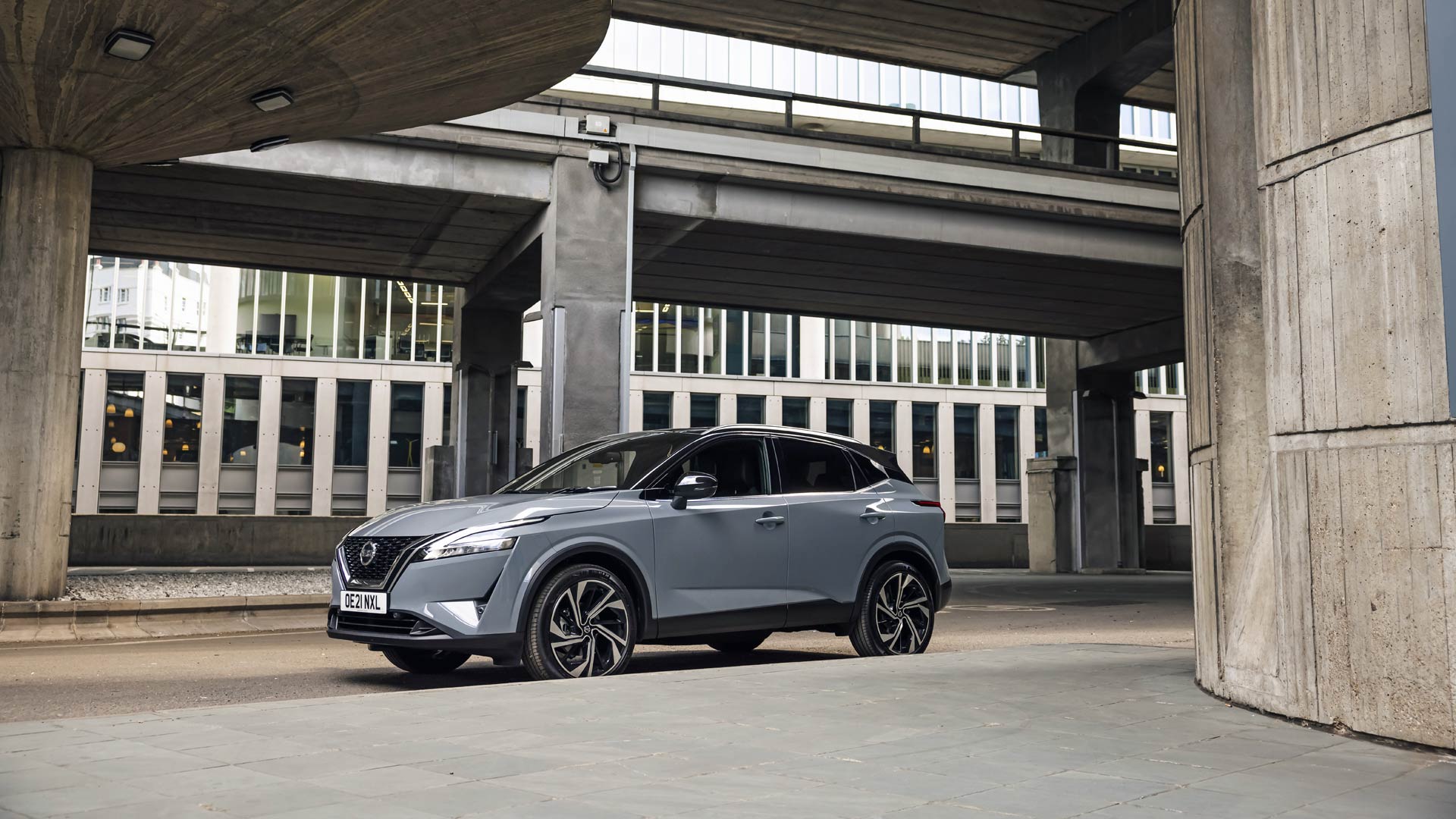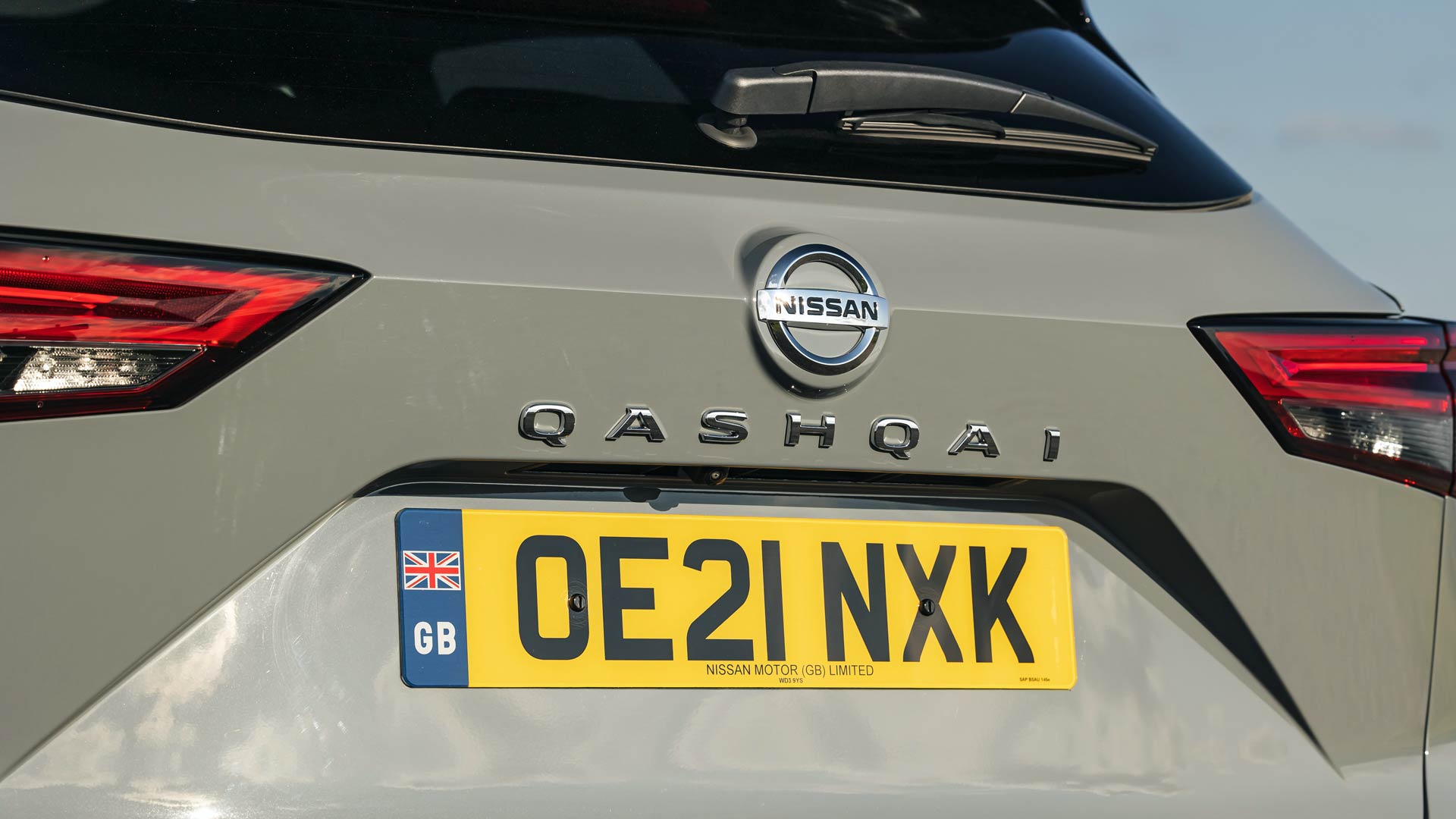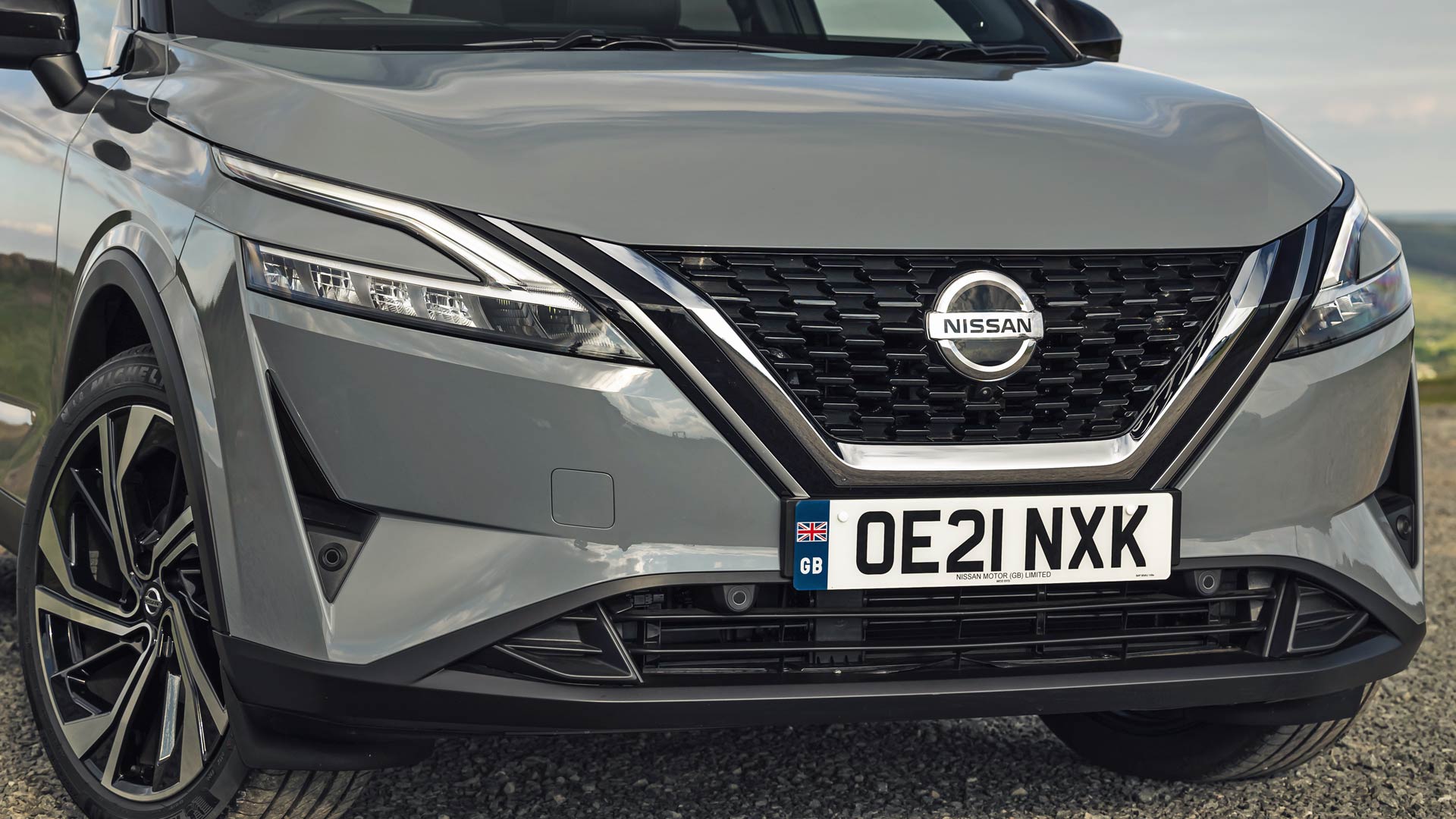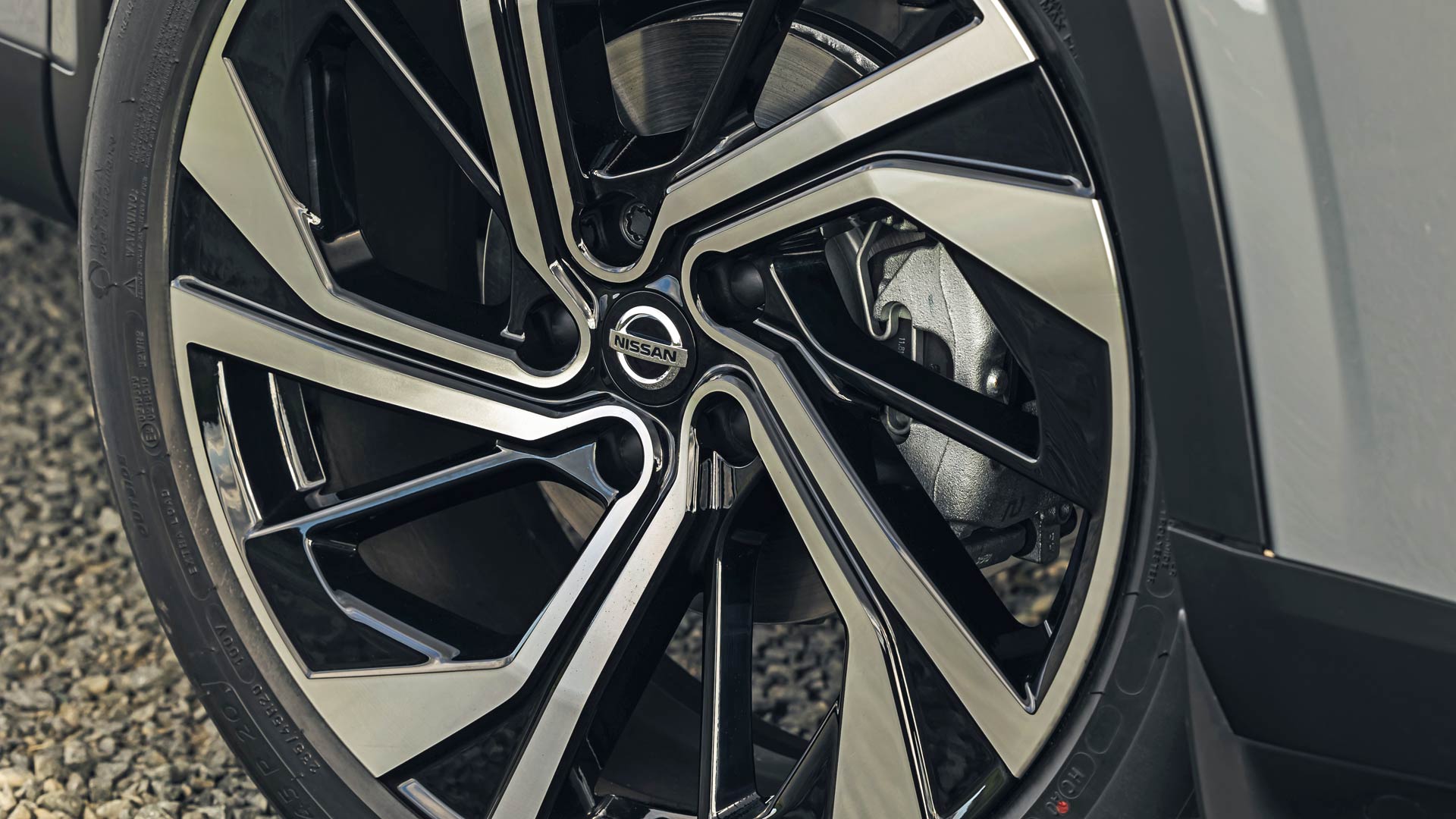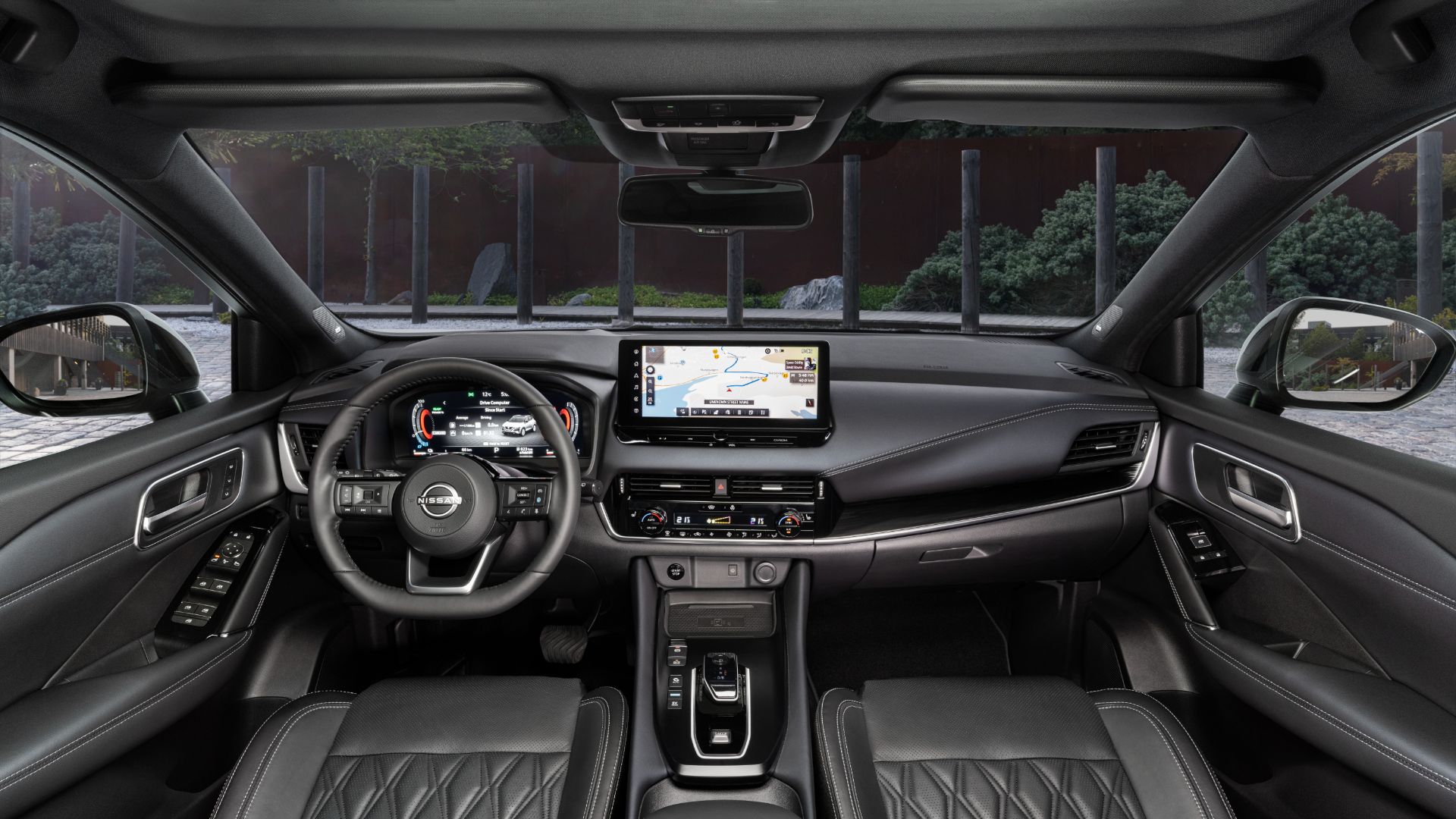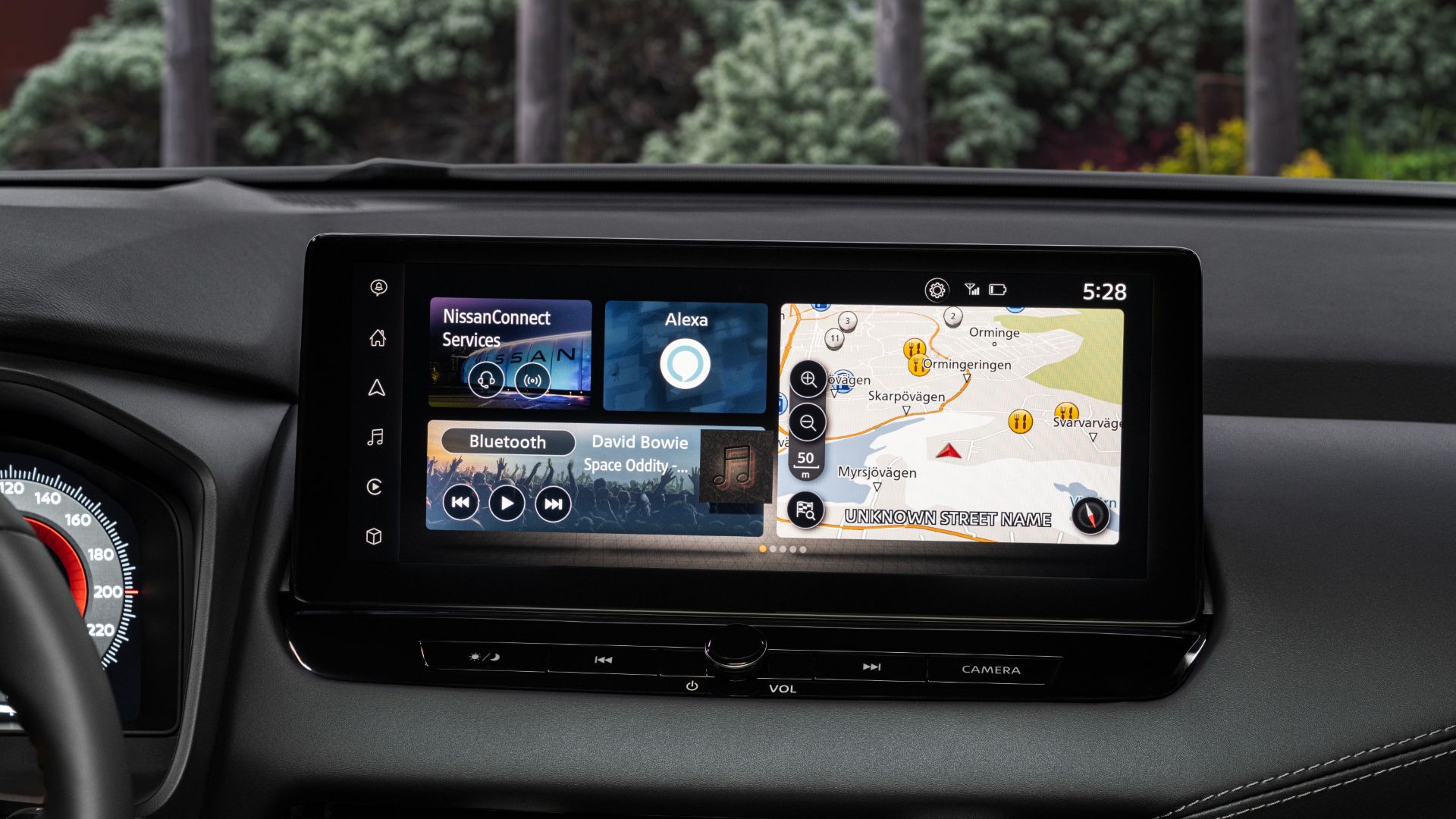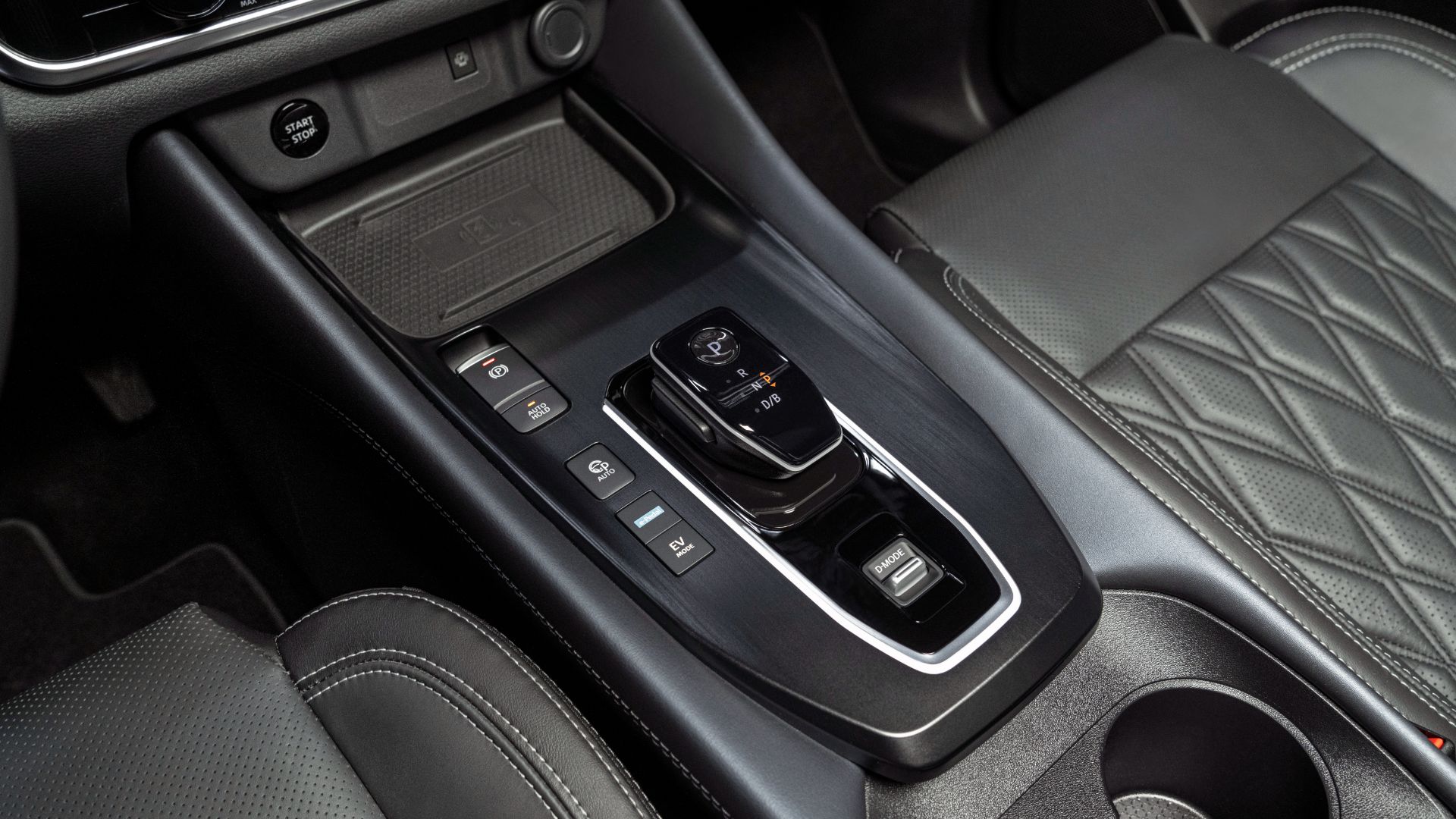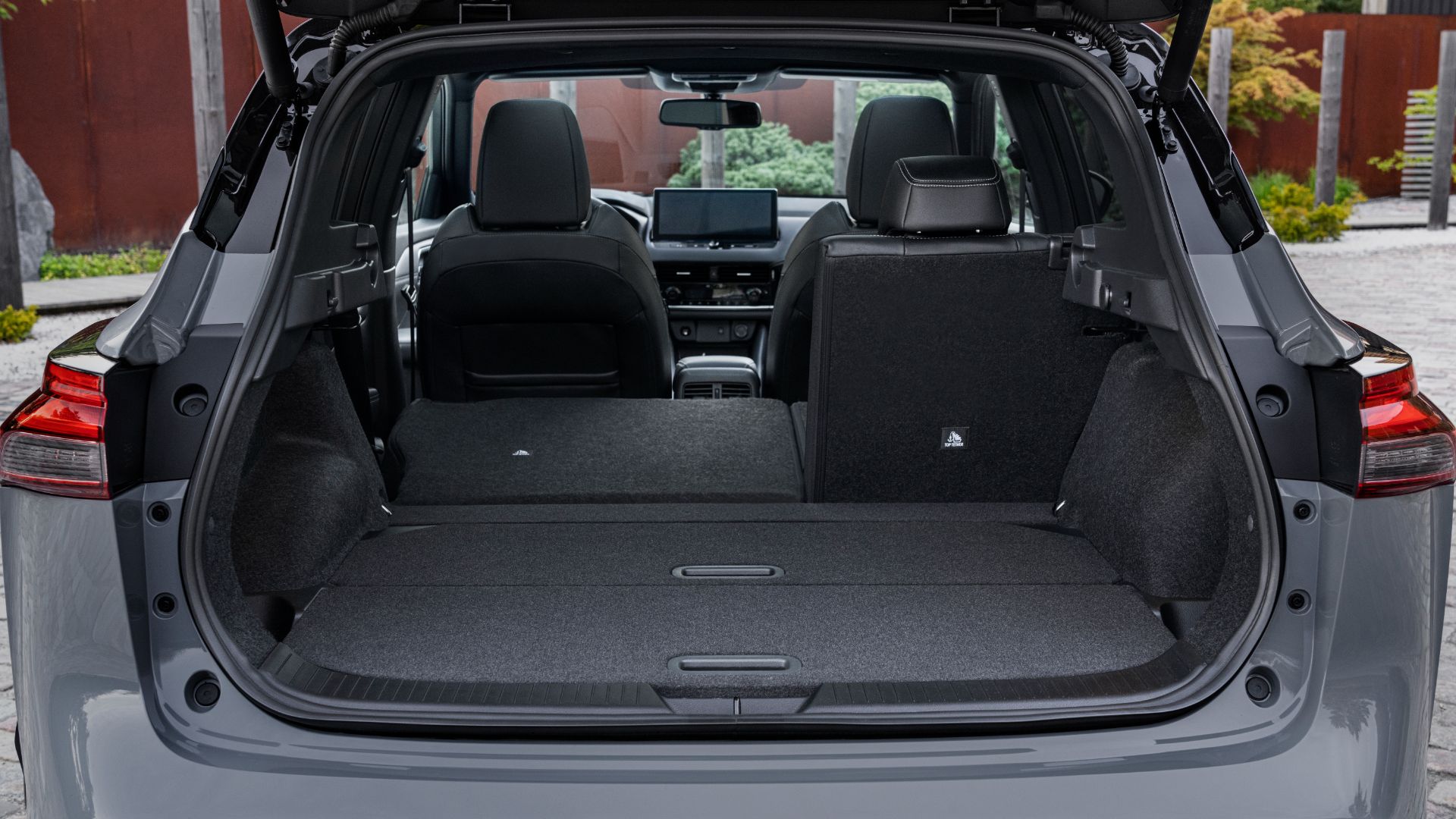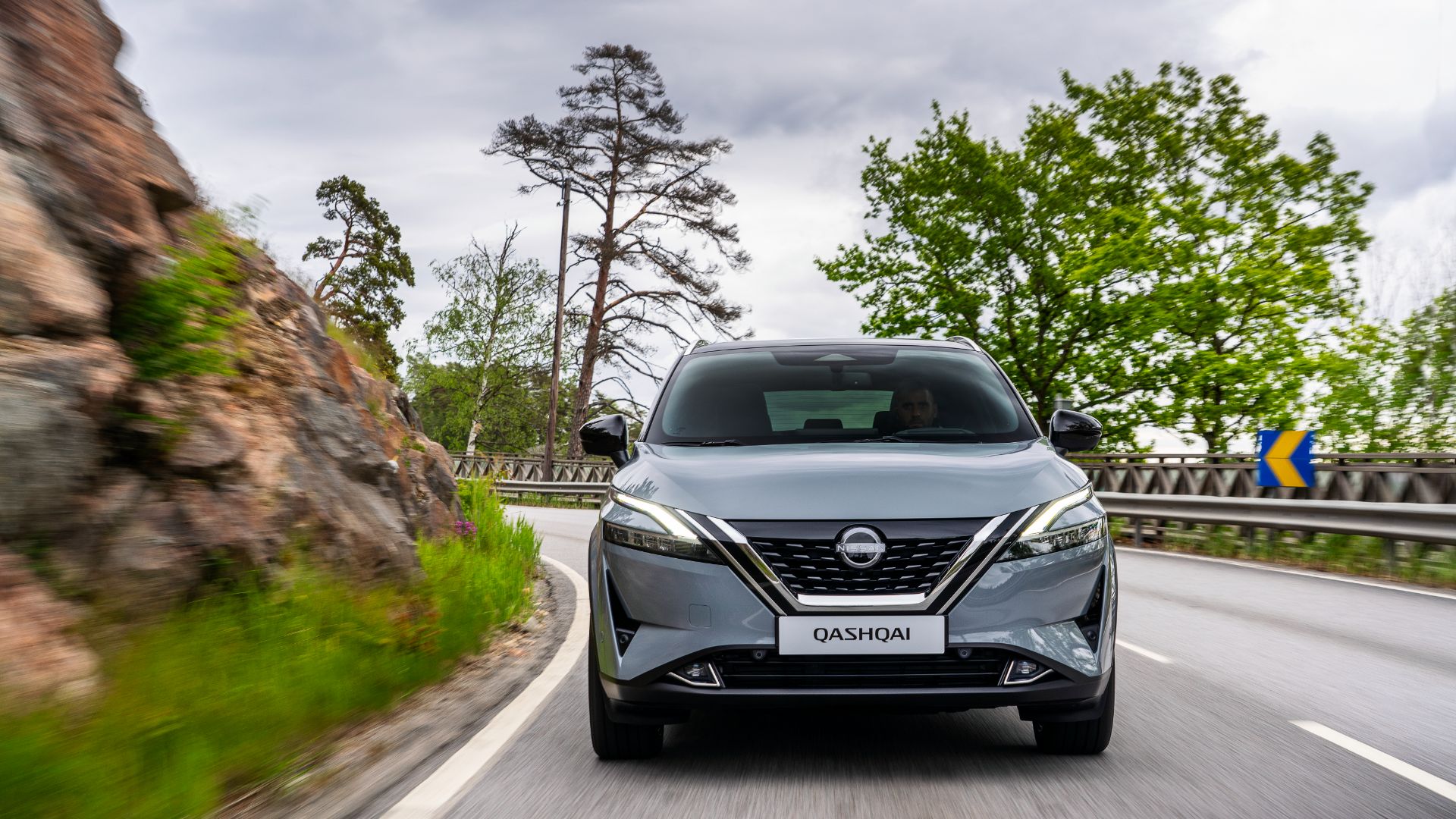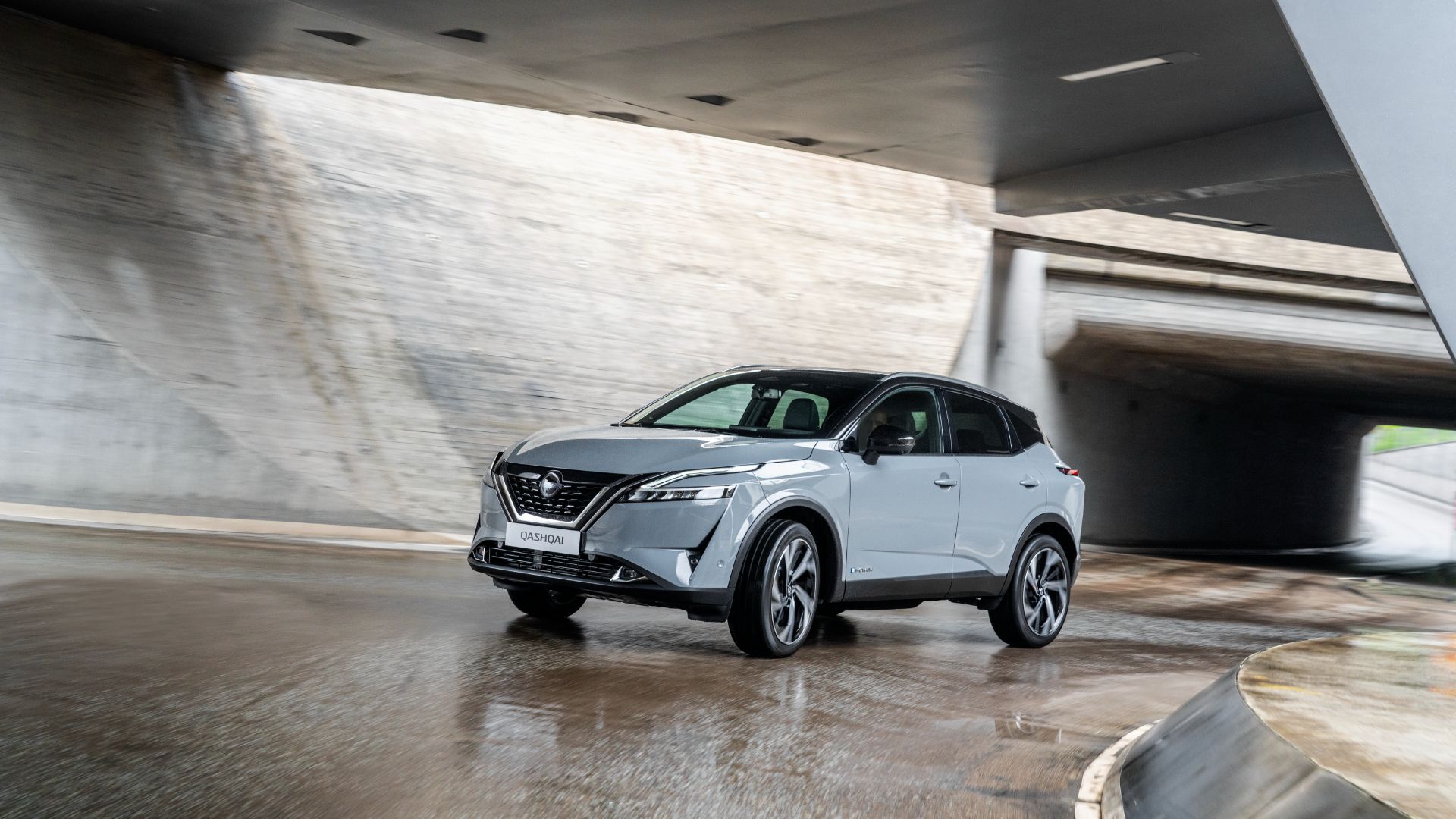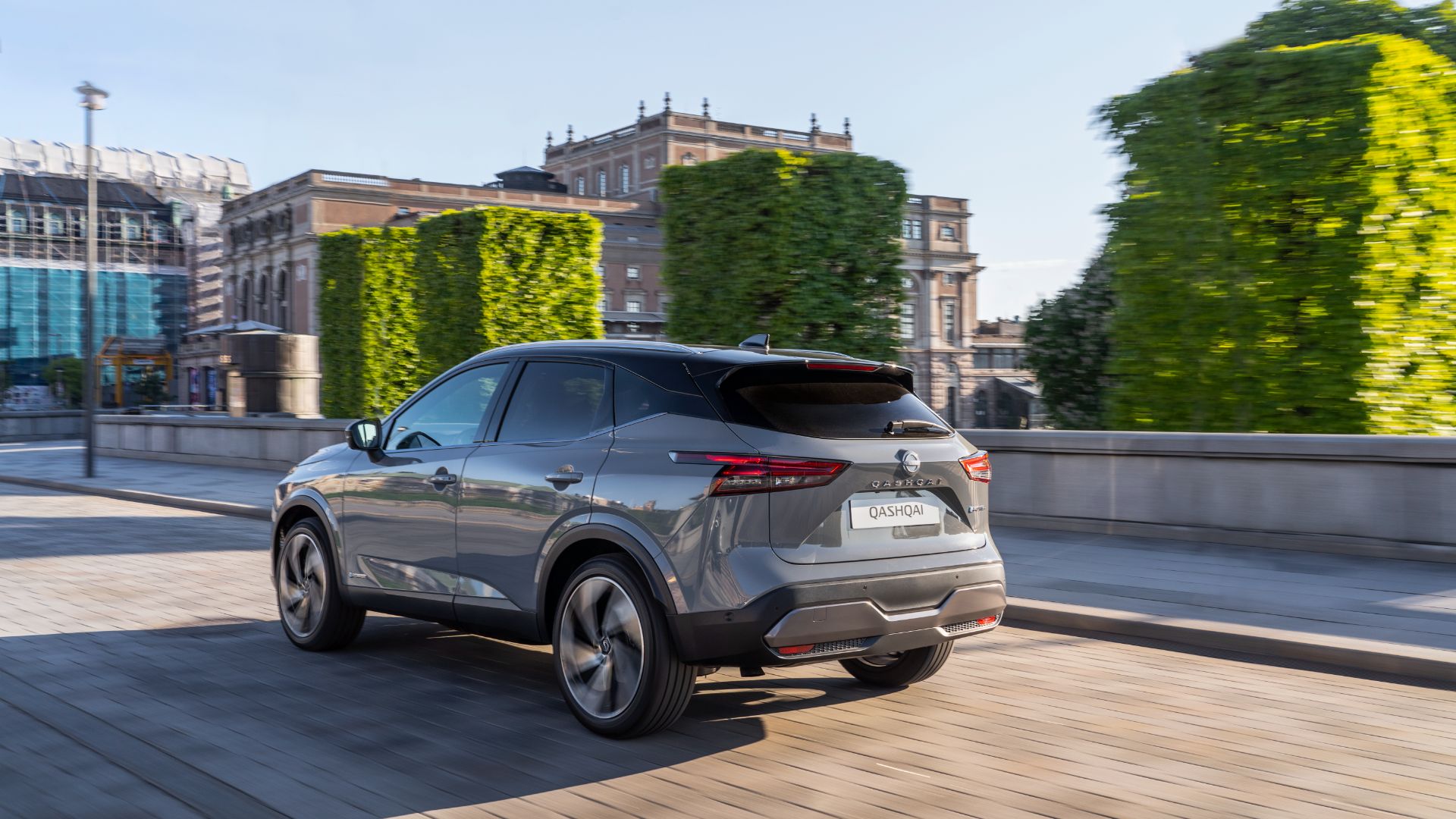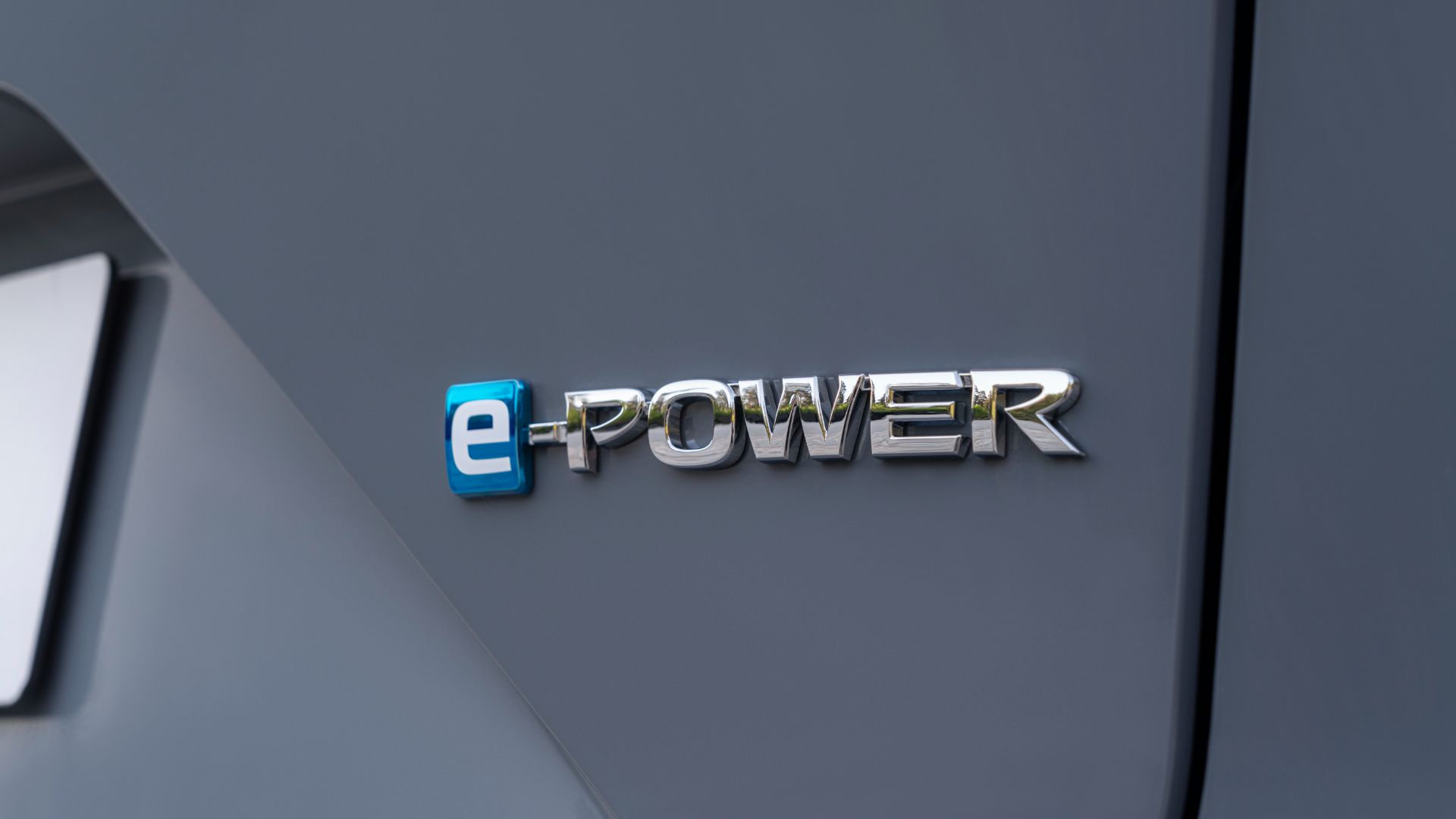- For: Easy to drive, practical interior, e-Power hybrid tech
- Against: Ride can feel firm, pricey at the top end
- Verdict: British-built SUV delivers everything a family needs
Since the Nissan Qashqai was first launched in 2007, around 5.5 million examples have been sold around the world. As the archetypal crossover SUV, getting this third-generation model right was hugely important to Nissan, and to its Sunderland factory.
Along with sharp-edged styling by Nissan’s European Design Studio in London, the latest Qashqai uses lightweight aluminium panels. This means that, despite being 35mm longer and 32mm wider, its body weighs 60kg less than before.
The fresh design makes the Qashqai look distinctive (if any car that sells in the millions can be described as such), with slim LED headlights contributing to its angular aesthetic. The ‘Qashqai’ name stamped into the front wing is a neat detail, too. Buyers can pick from 11 paint colours, with the option of a contrasting roof.
Born to be mild
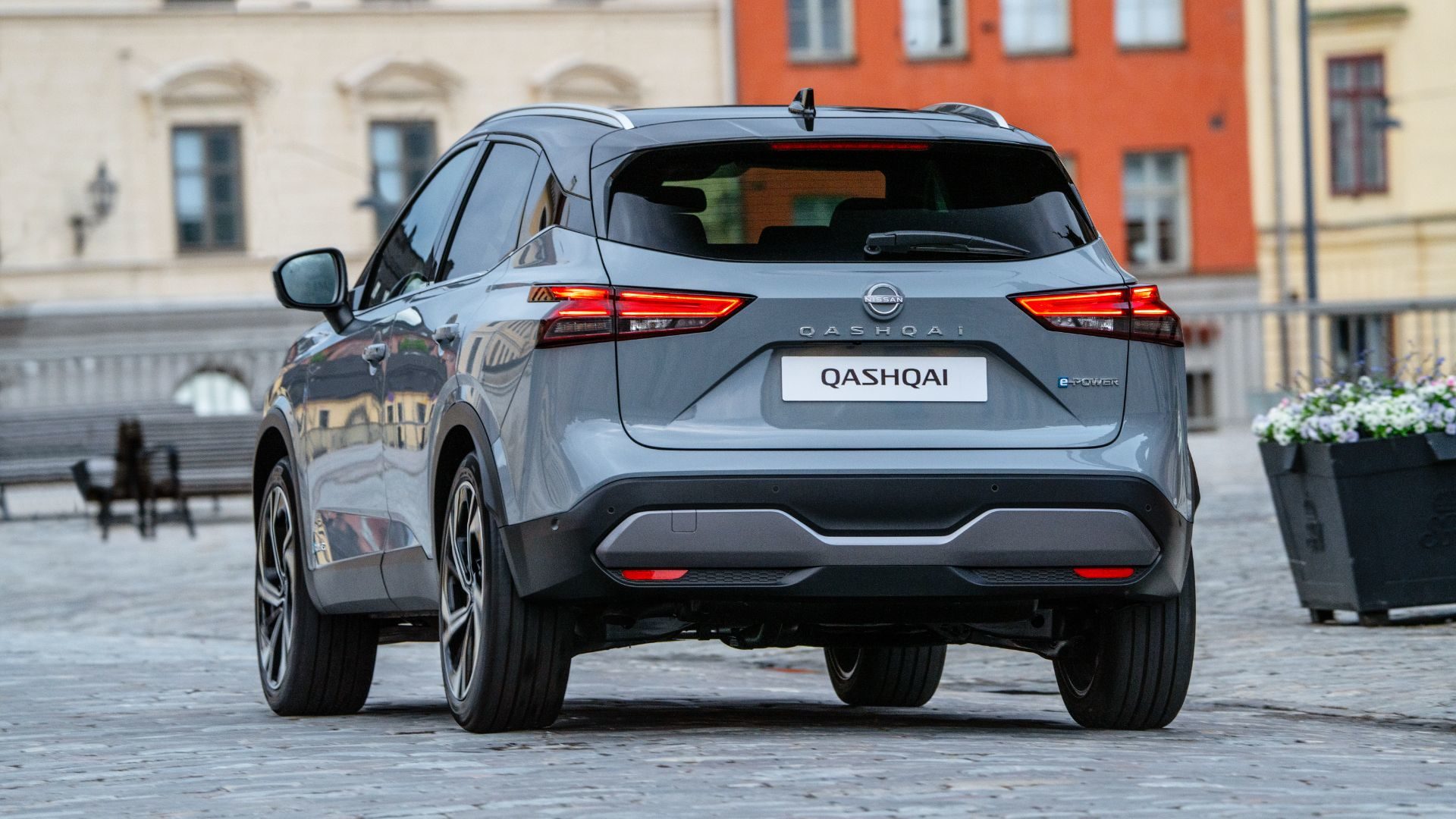
The core engine for the Qashqai is 1.3-litre turbocharged four-cylinder petrol, which comes in 140hp and 158hp flavours.
There’s also a new e-Power ‘range-extender’ hybrid that uses a 190hp electric motor to drive the front wheels, plus a 1.5-litre petrol engine as a generator (either to power the motor or charge the 2.1kWh battery). Nissan expects the e-Power to account for 40 percent of Qashqai sales when it reaches showrooms in September 2022.
We started in the 158hp 1.3 version. A 0-62mph time of 9.5 seconds feels relatively quick and is certainly fine for everyday driving. Refinement is impressive, too.
Actually, that’s true until you swap into the e-Power. This offers the instant torque and near-silence of an electric car around town; only when you accelerate hard do you hear the thrum of a petrol engine. The option of one-pedal driving, just like the fully electric Nissan Leaf, also makes for relaxed progress.
Leading from the front
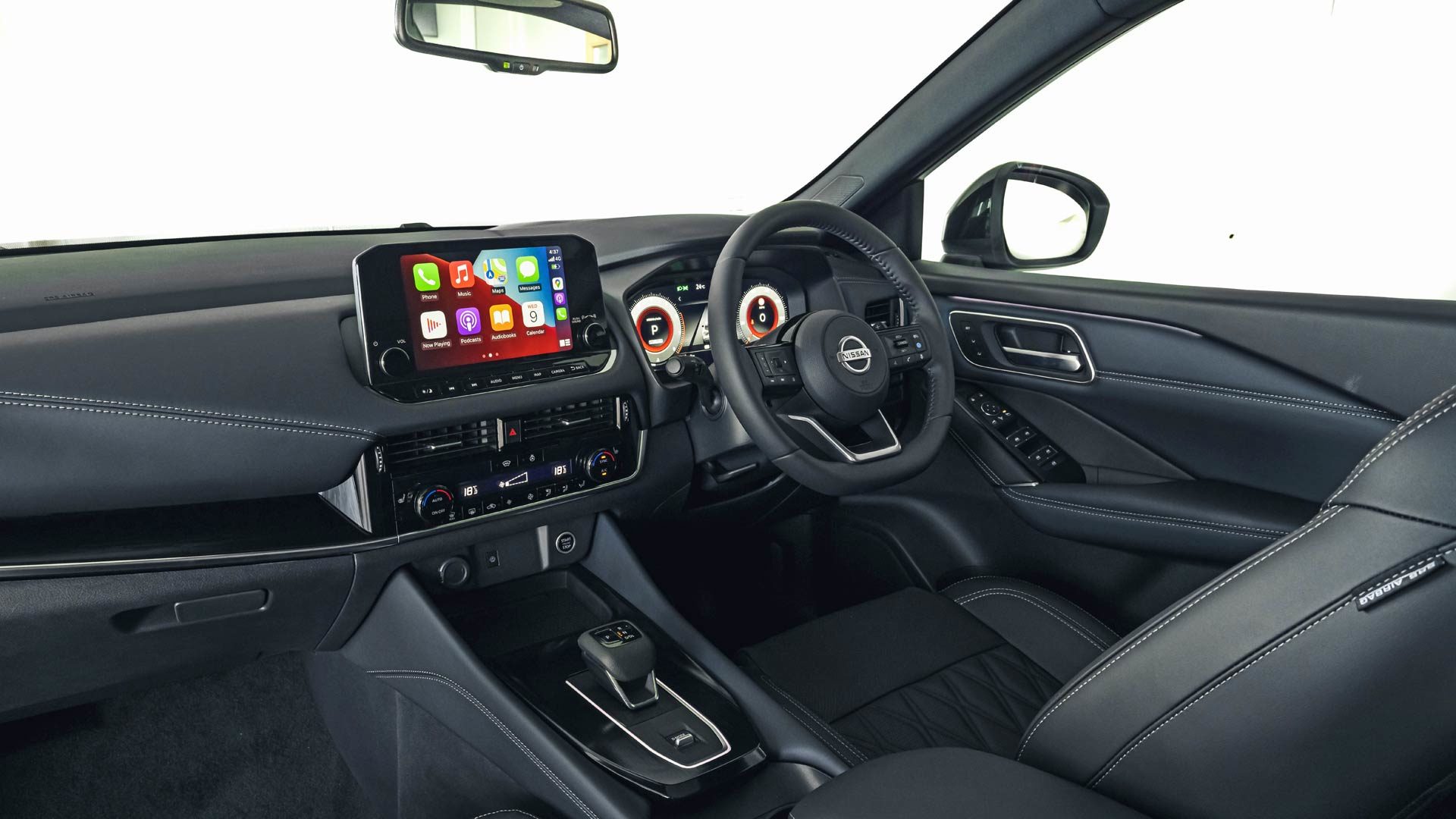
A six-speed manual gearbox is standard on the 1.3-litre Qashqai. Nissan says it has made the shift ‘more direct and sportier’, but it adds little driver involvement. Indeed, it makes a strong case for picking the Xtronic CVT automatic ‘box, which replicates stepped gears.
Picking the Xtronic transmission is also the only way to have a Qashqai with four-wheel drive. All other versions, including the e-Power, are solely front-driven.
The e-Power actually has no gearbox at all, and the fact that the petrol engine isn’t directly connected to the wheels means it can operate as efficiently as possible. Figures of 53.3mpg and 119g/km of CO2 don’t seem overly remarkable, but for around £2,000 more than the 158hp 1.3 auto, the e-Power makes a strong case. It’s cheaper than the plug-in hybrids of most rivals, too.
Smooth operator
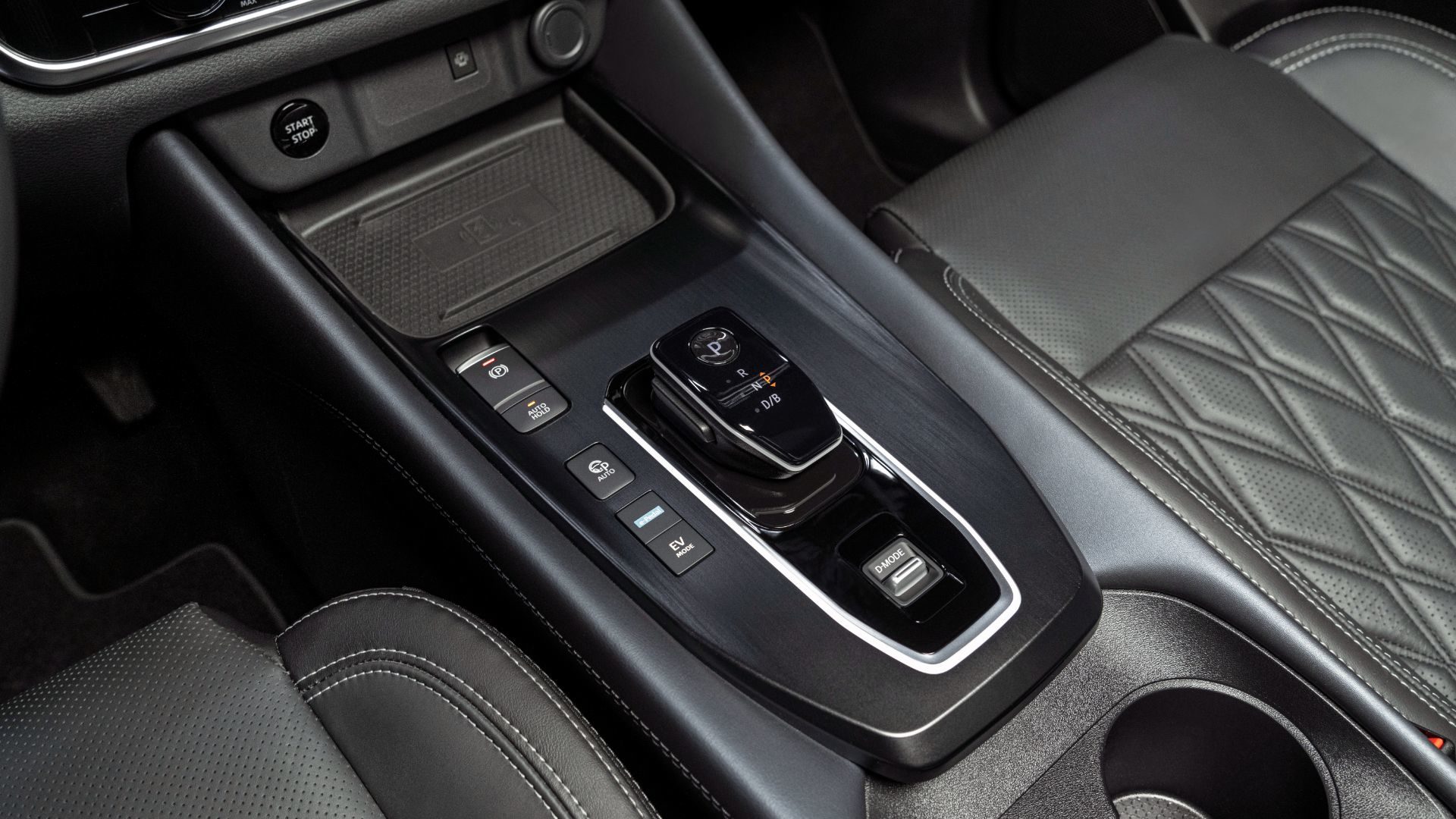
As a family SUV, agility is understandably low on the list of priorities, but the Qashqai does not disgrace itself on a twisty road. It generates plenty of grip and resists body-roll, although the steering provides little feedback.
The ride itself feels tauter than you might expect for a family car. Four-wheel-drive models, and those with 20-inch wheels, get a fancier multi-link rear suspension setup. It means the ride for these versions is no worse than a Qashqai with 19-inch wheels.
The e-Power carries around 200kg of extra weight, although it also has more power to compensate. Its EV-like character seems to encourage steady progress, with no need to work the drivetrain hard. Overall, it’s the most satisfying Qashqai to drive.
A design for life
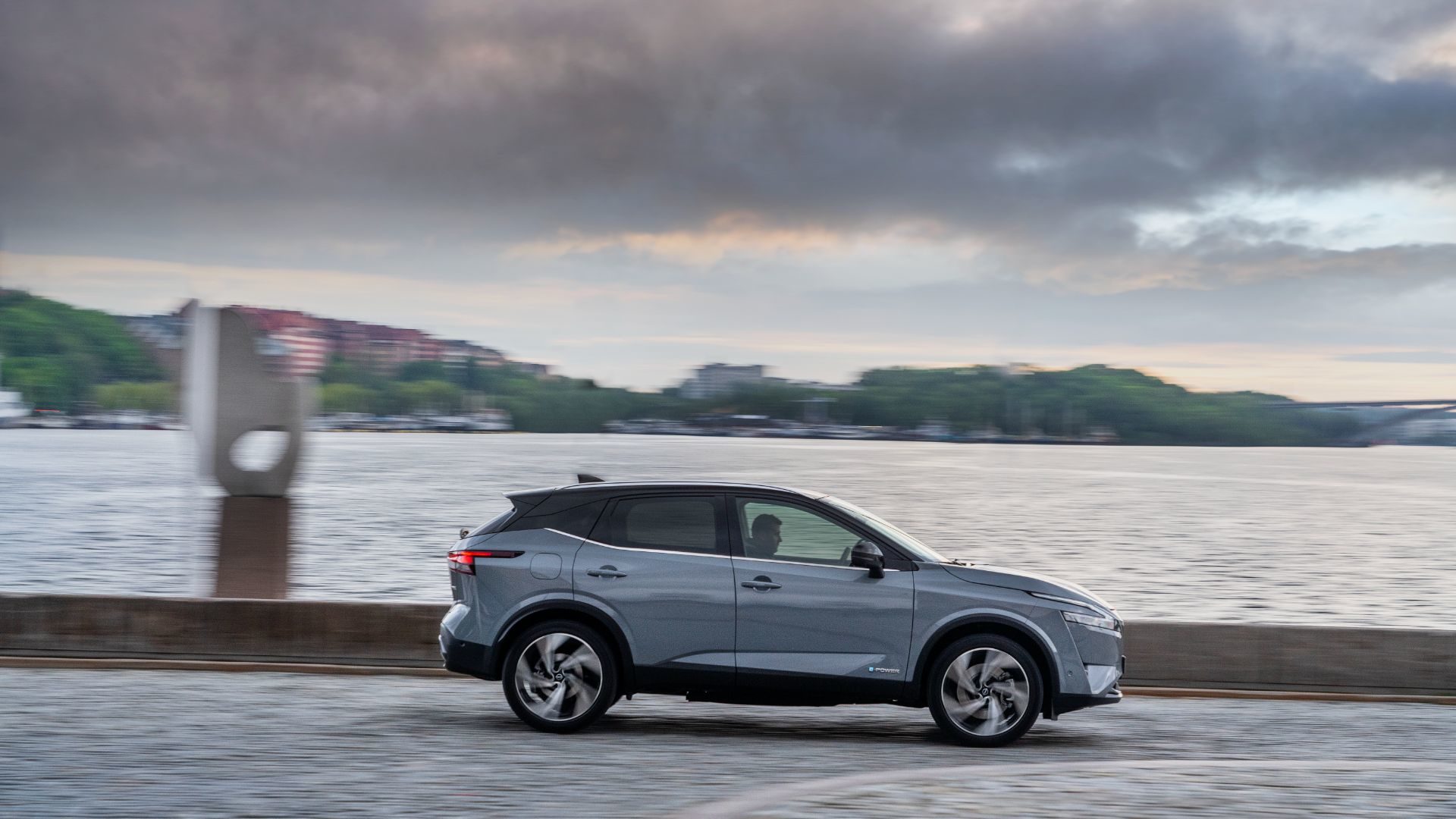
The Qashqai’s interior uses quality materials throughout. It has a genuinely premium vibe, with the steering wheel feeling particularly plush. Higher-grade models feature quilted leather seats, along with a huge panoramic sunroof.
Nissan has, sensibly, avoided the trend for using a touchscreen to control everything. The dashboard also has physical buttons, making it easy to adjust the air conditioning. Much is operated via the steering wheel-mounted controls, with Tekna models and above gaining a 12.3-inch digital driver display.
A 20mm longer wheelbase has improved rear legroom, with headroom also increased over the old model. Boot space has grown by 50 litres, with Nissan’s clever Flexible Luggage Board System retained. It allows the boot to be divided easily, along with creating additional storage beneath the floor.
The cabin itself includes multiple cubbyholes and cupholders, and the doors are even designed to open wider: up to 90 degrees. A real plus for those with child car seats.
Don’t have nightmares
The new Qashqai is not a car that will cause you to wake up in the middle of the night, desperate to drive it. More importantly, though, it will not give you nightmares about how to transport the whole family on your next holiday.
Nissan arguably created the family crossover, and this car proves it hasn’t lost its touch. It has many more competitors now – some 34 at last count. However, whether you go for petrol or e-Power, the British-built Qashqai remains a compelling choice for everyday motoring.
KEY INFO
- Launched: 2021
- Facelifted: TBC
- Due for replacement: TBC
Rivals: Peugeot 3008, Vauxhall Mokka, Honda HR-V Advance
